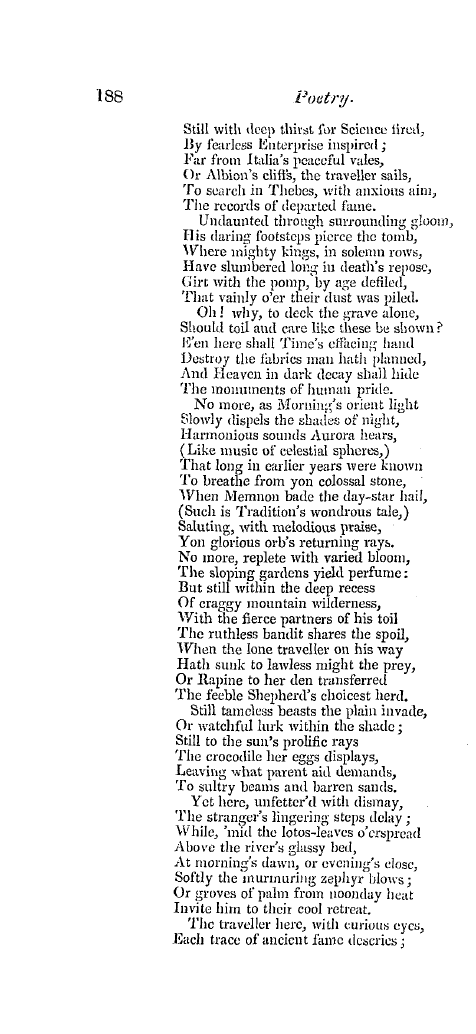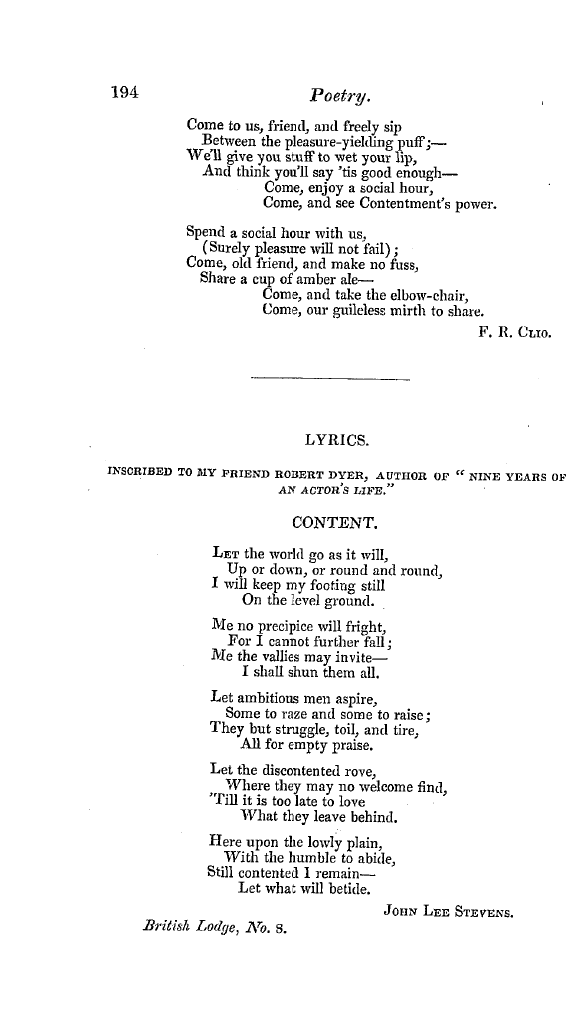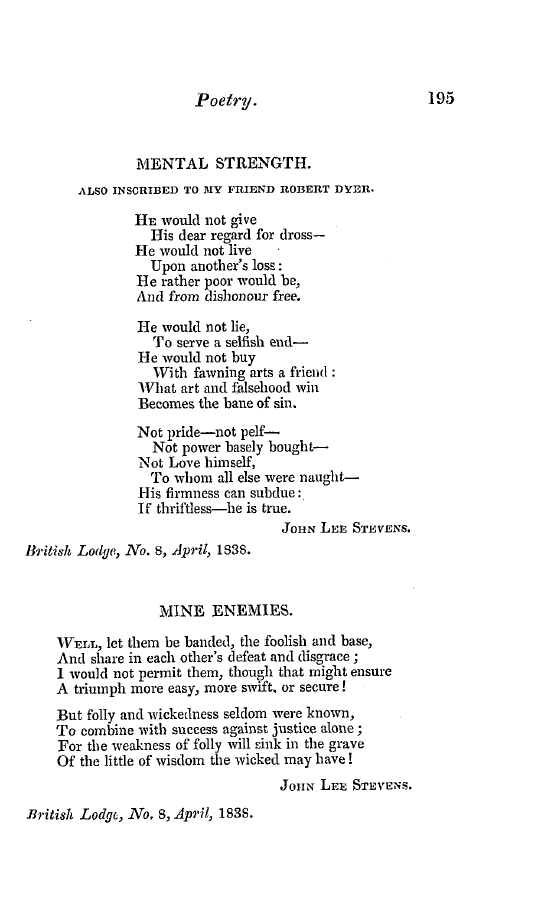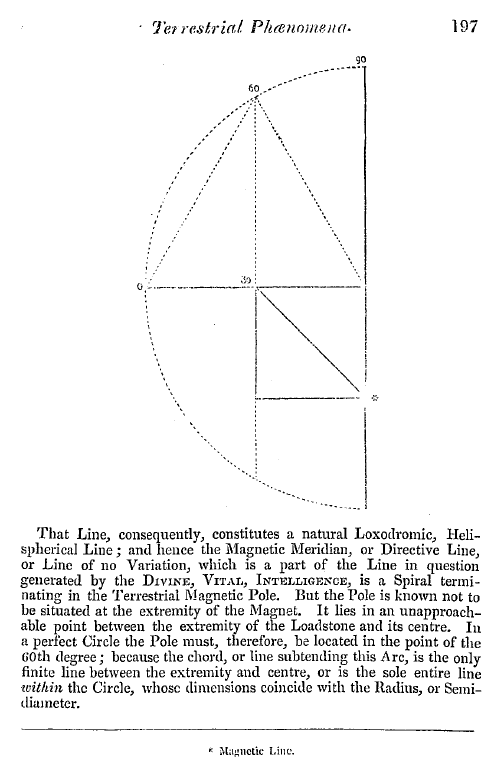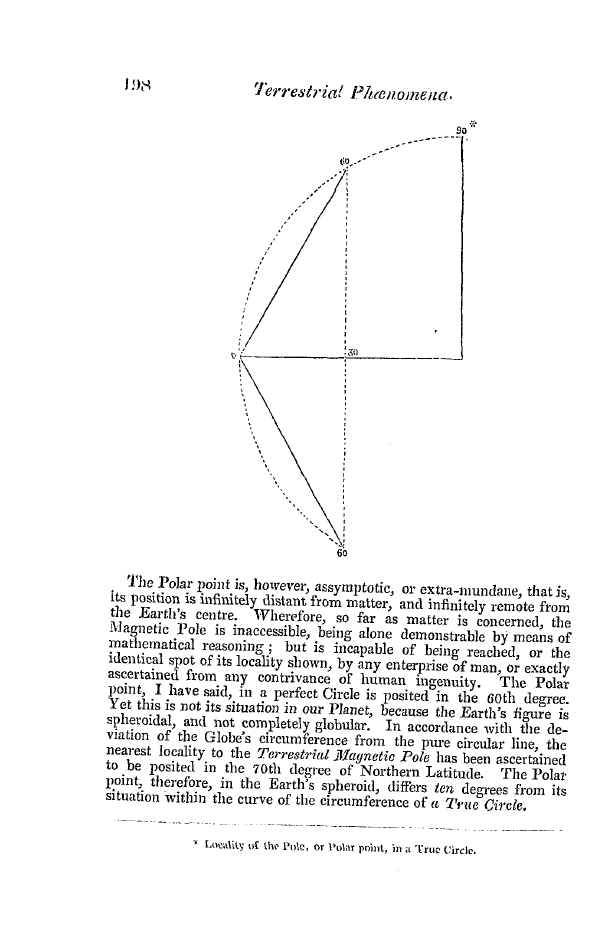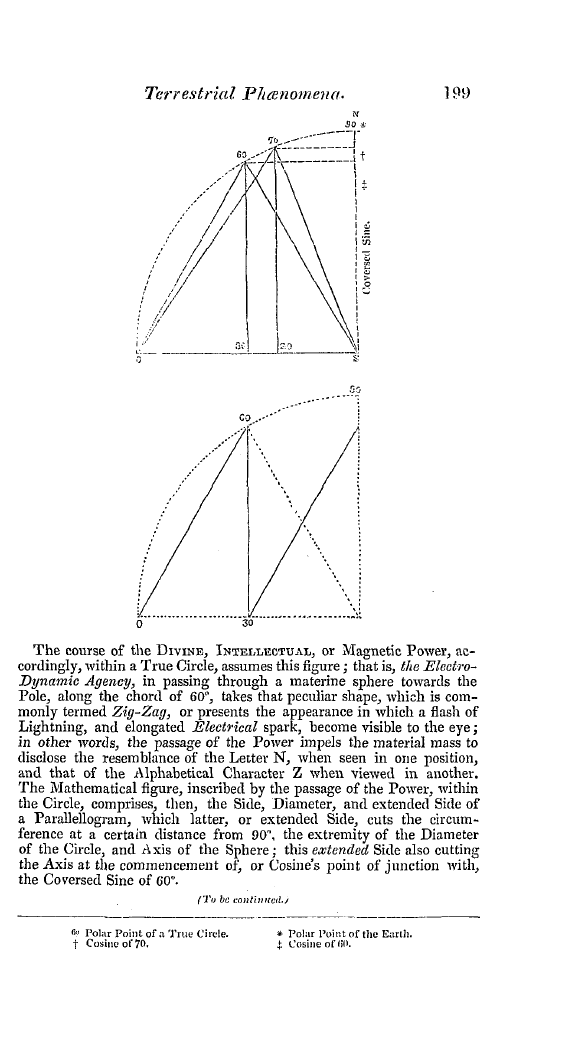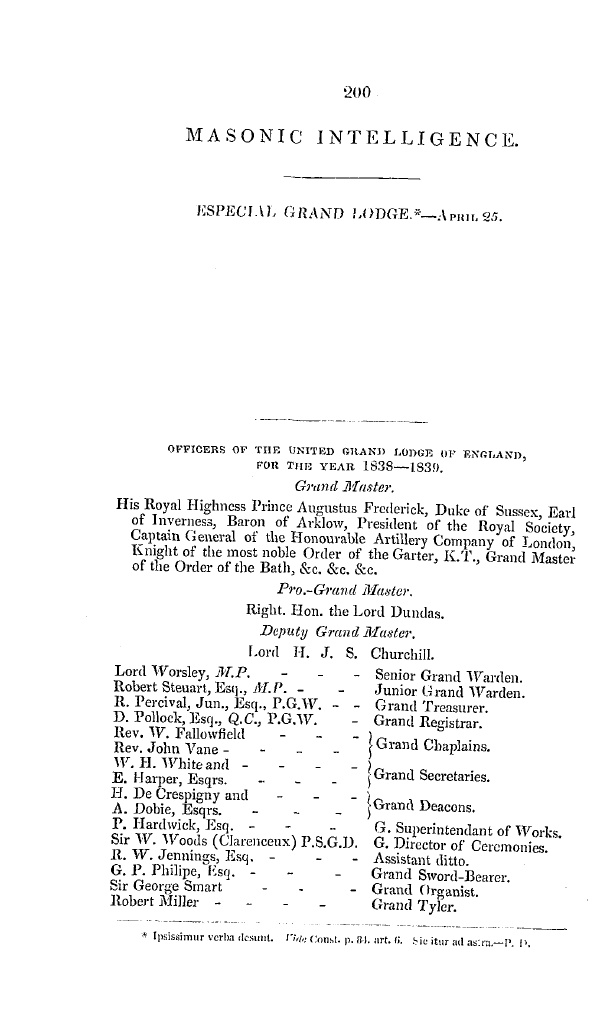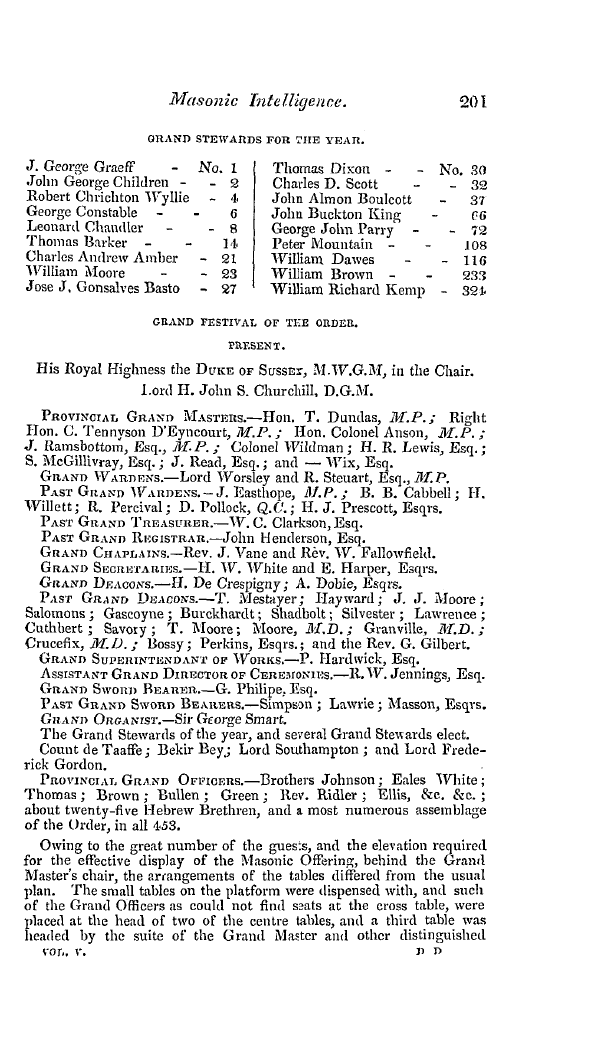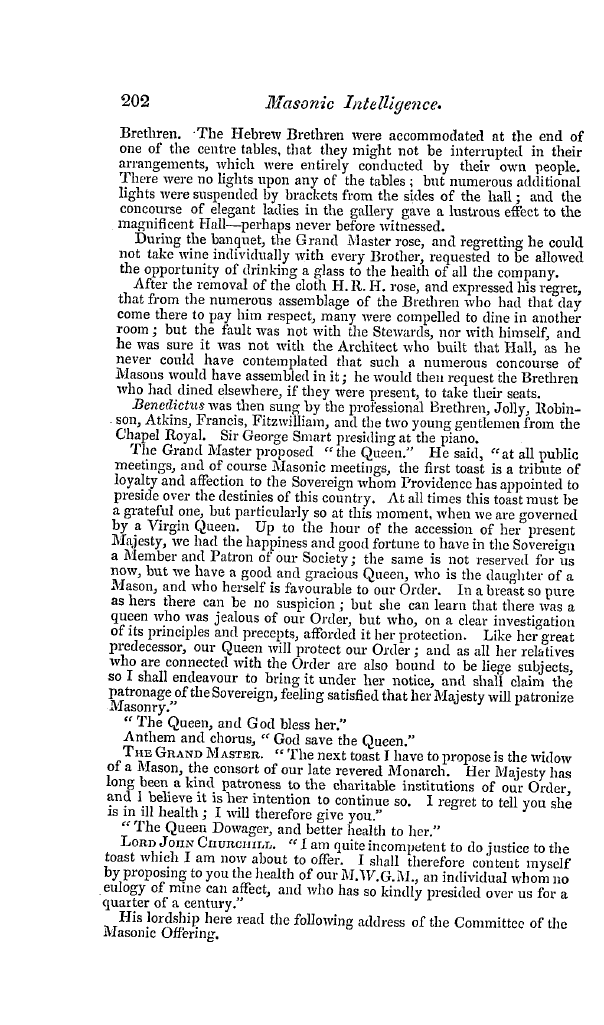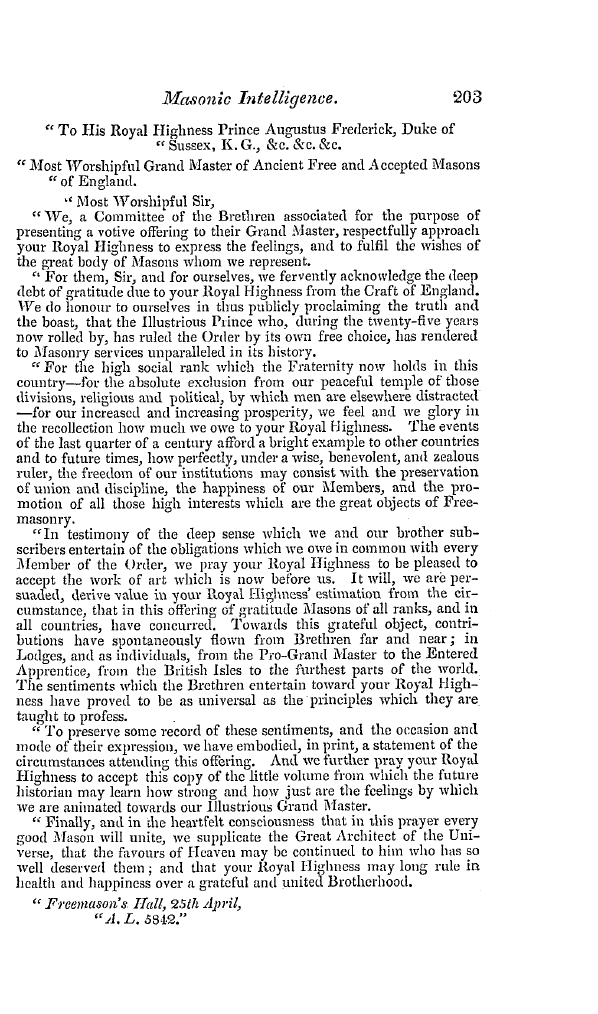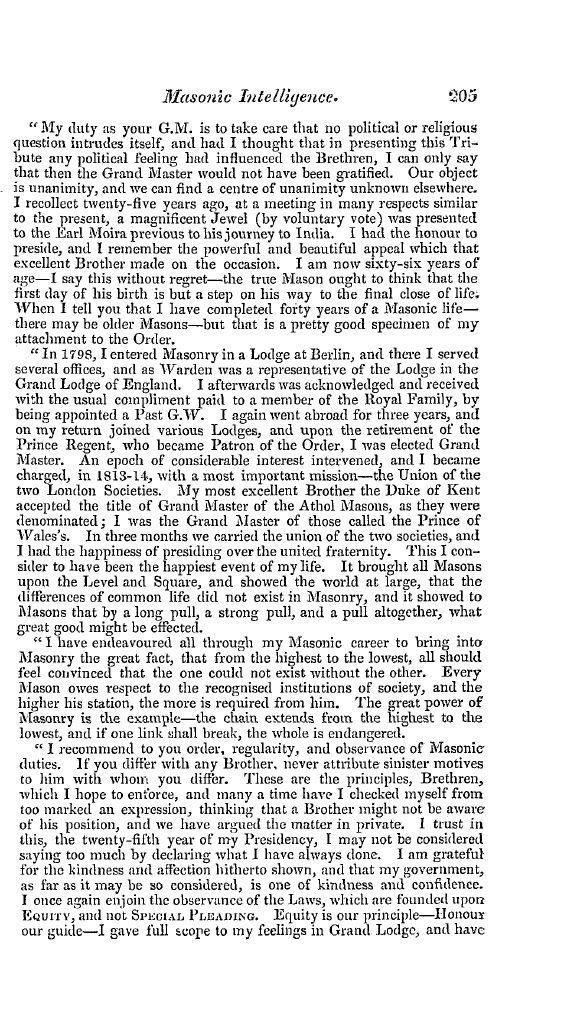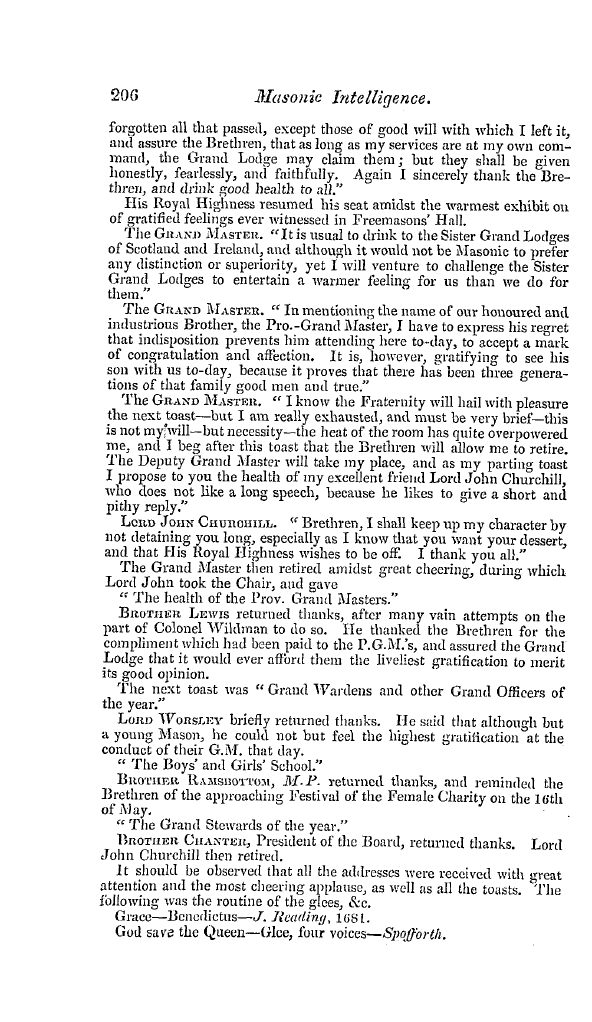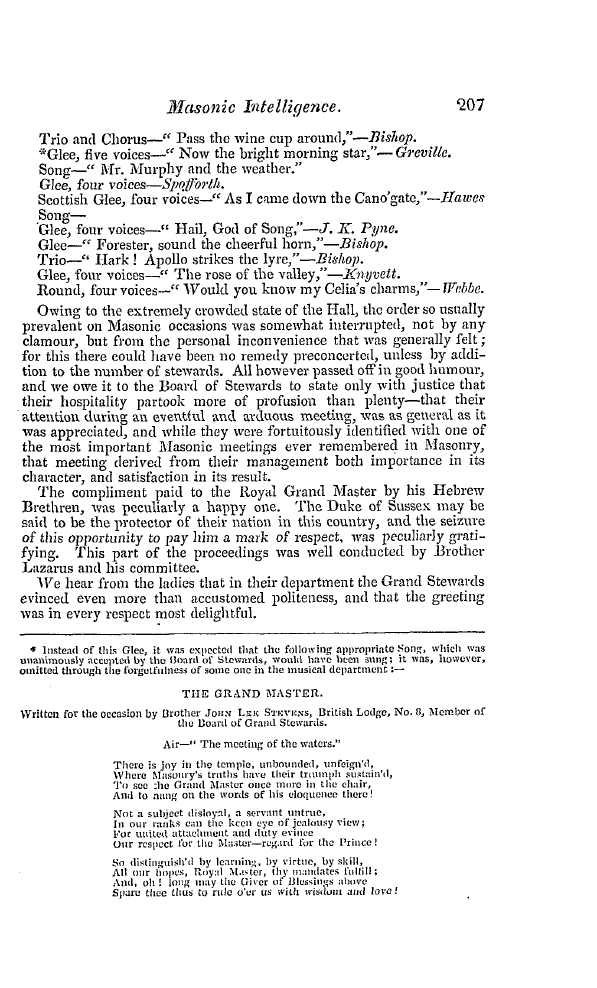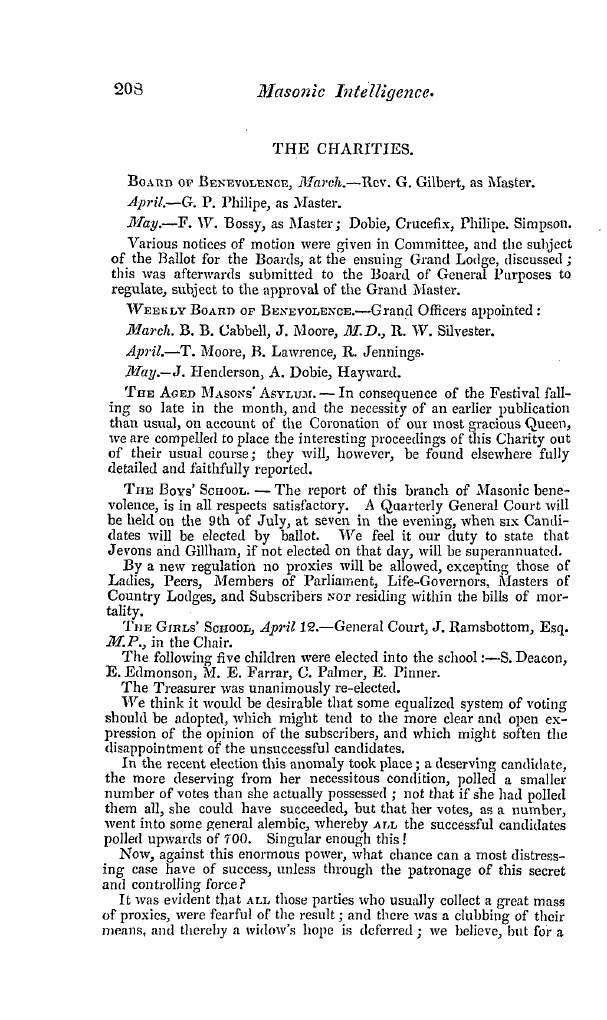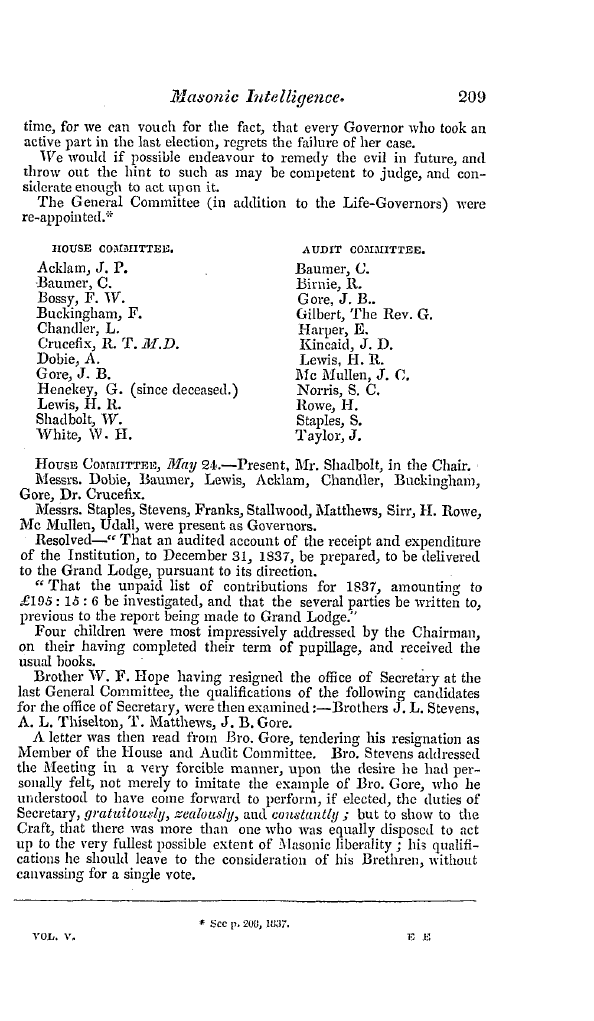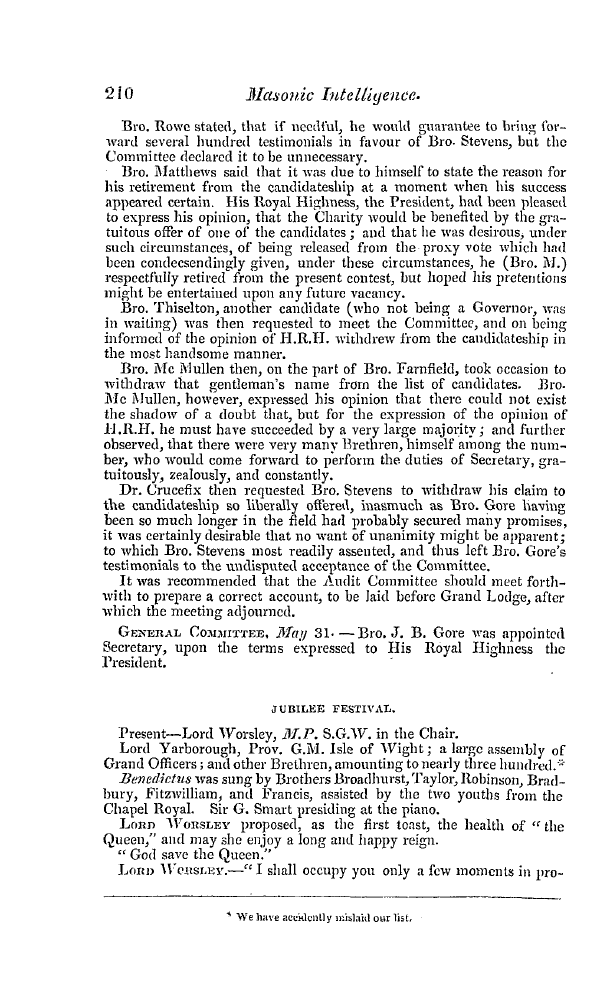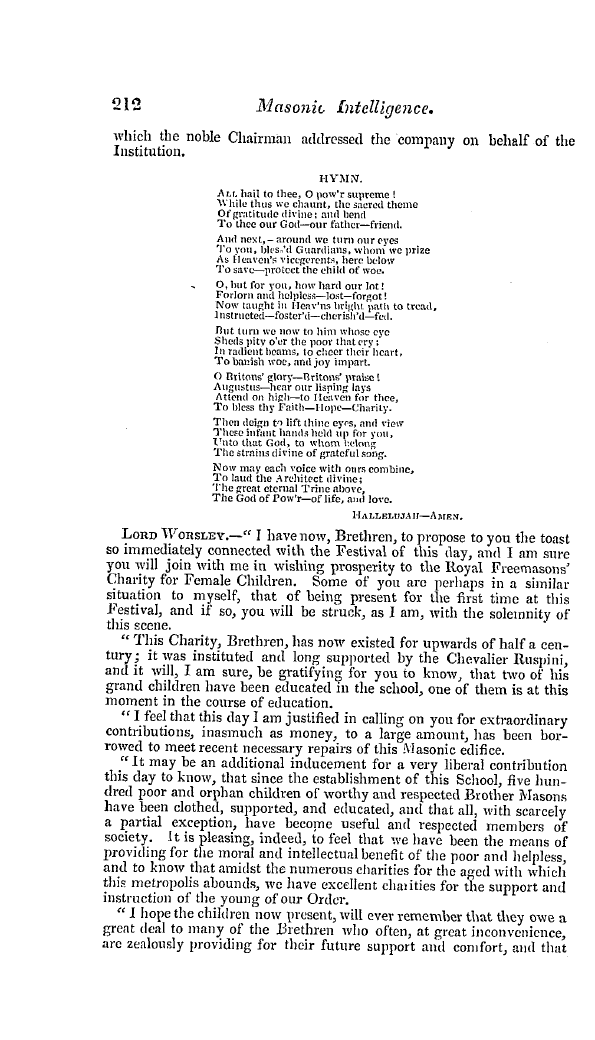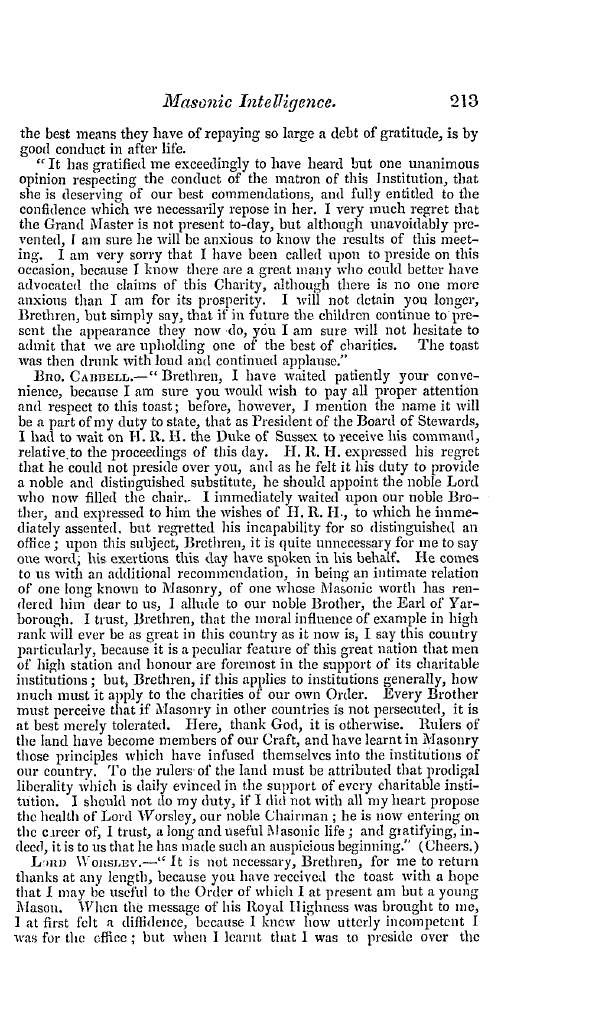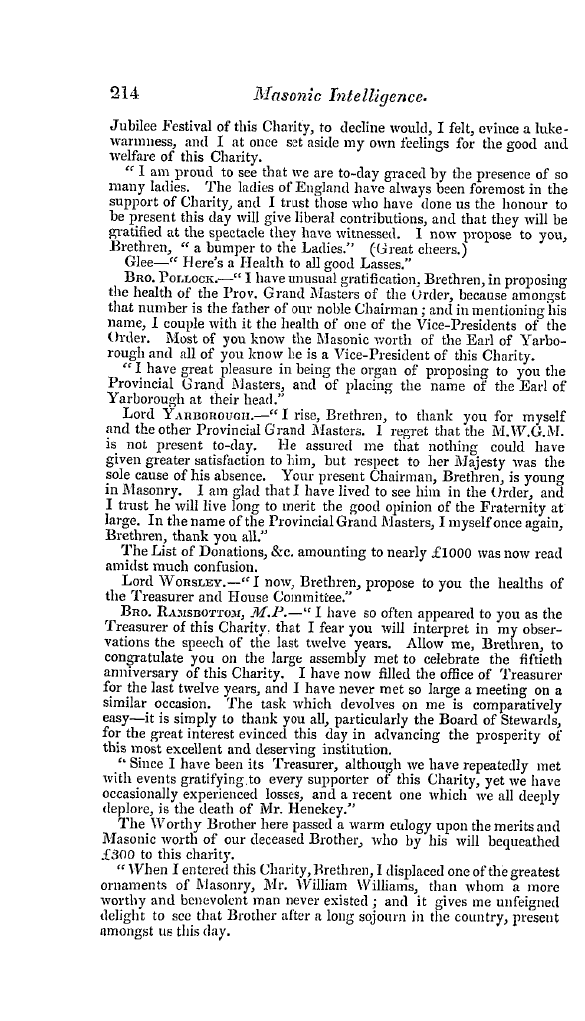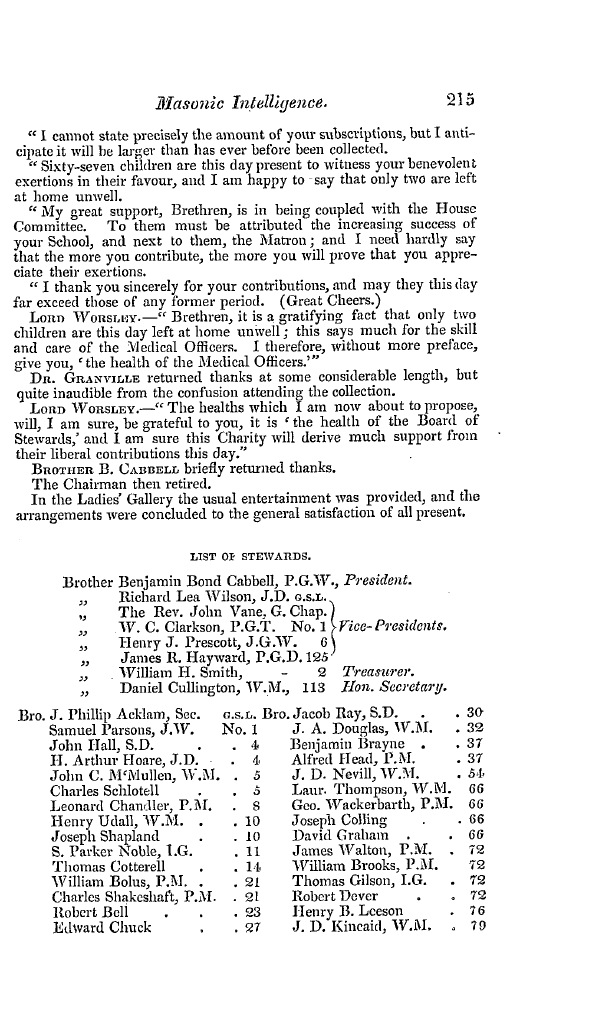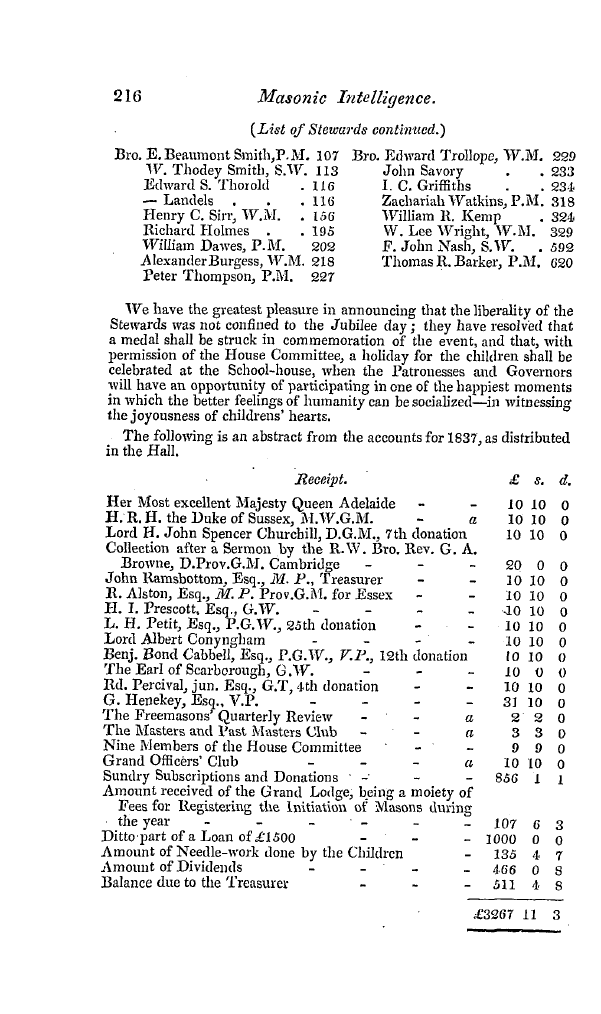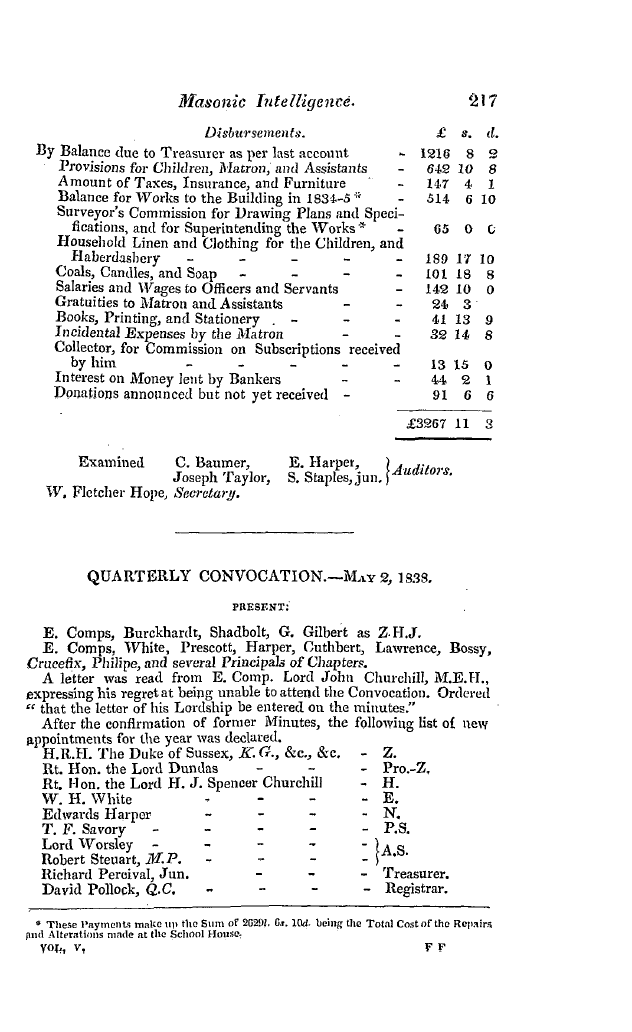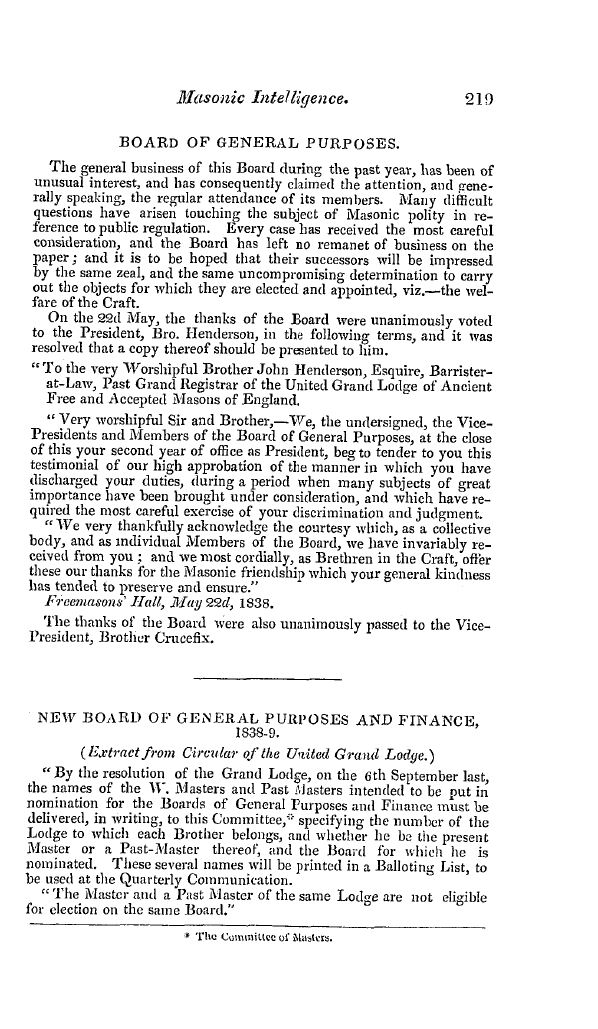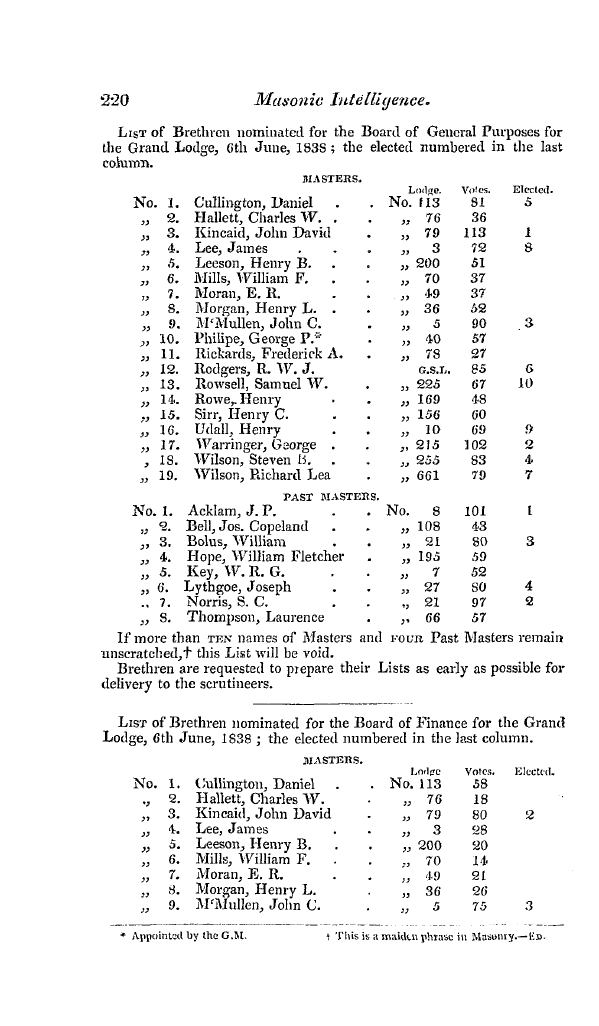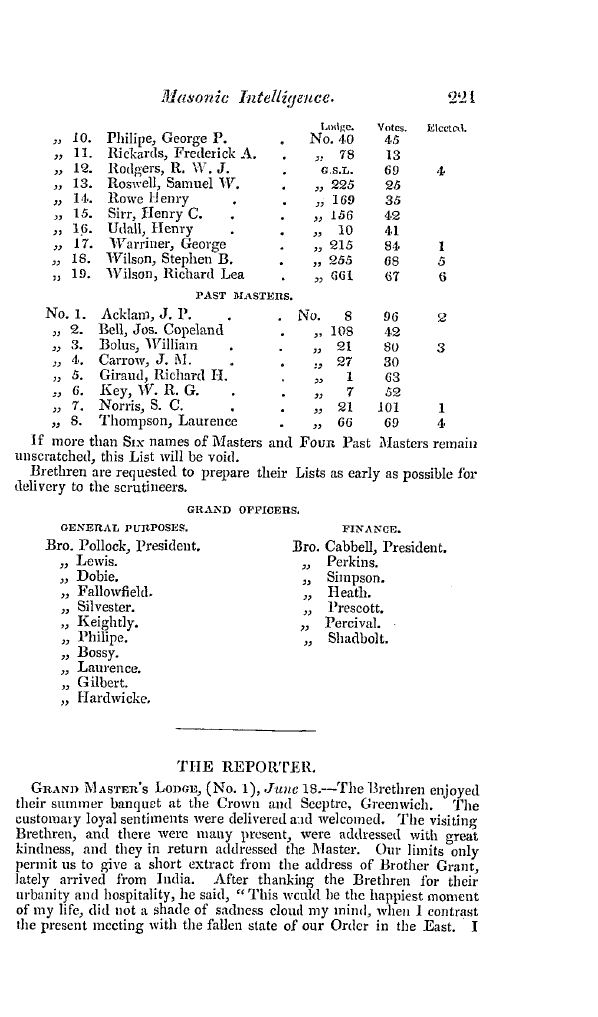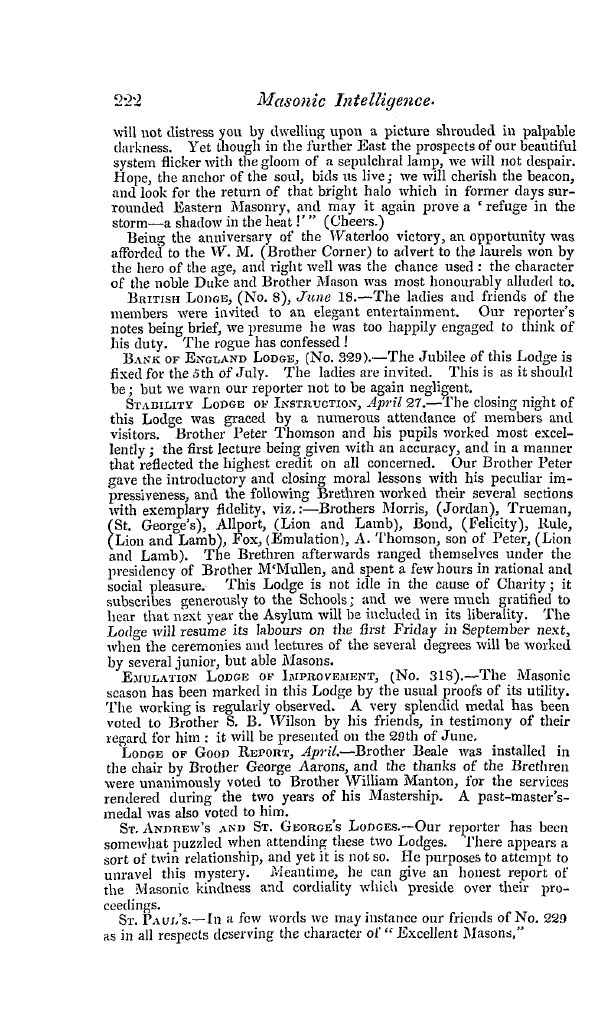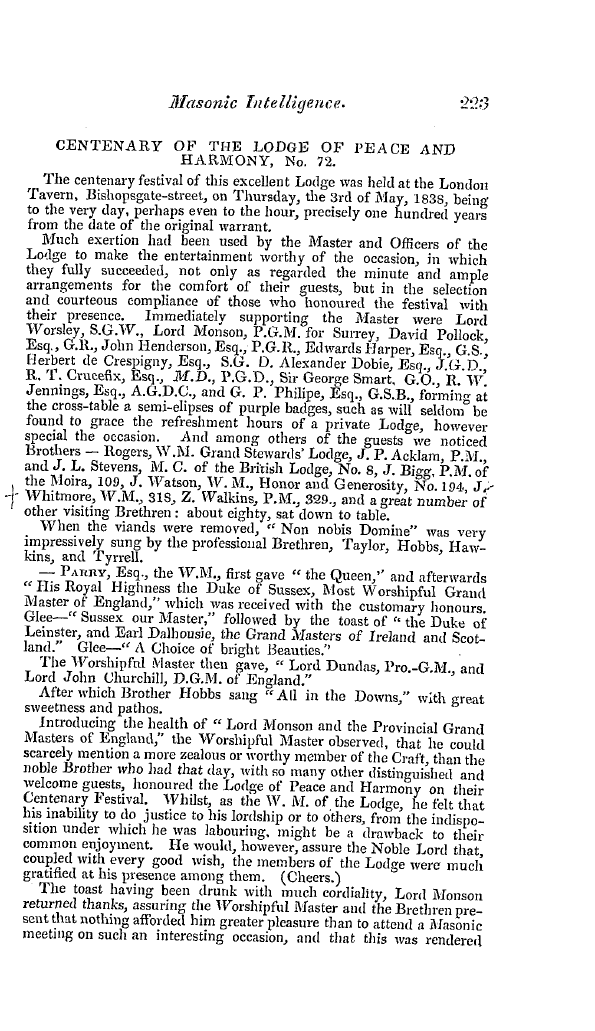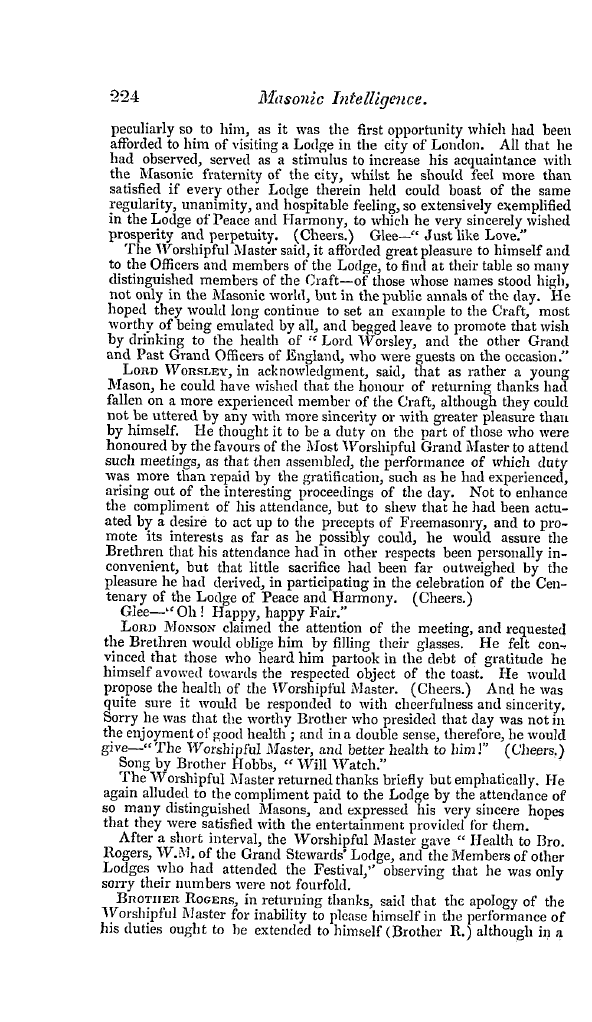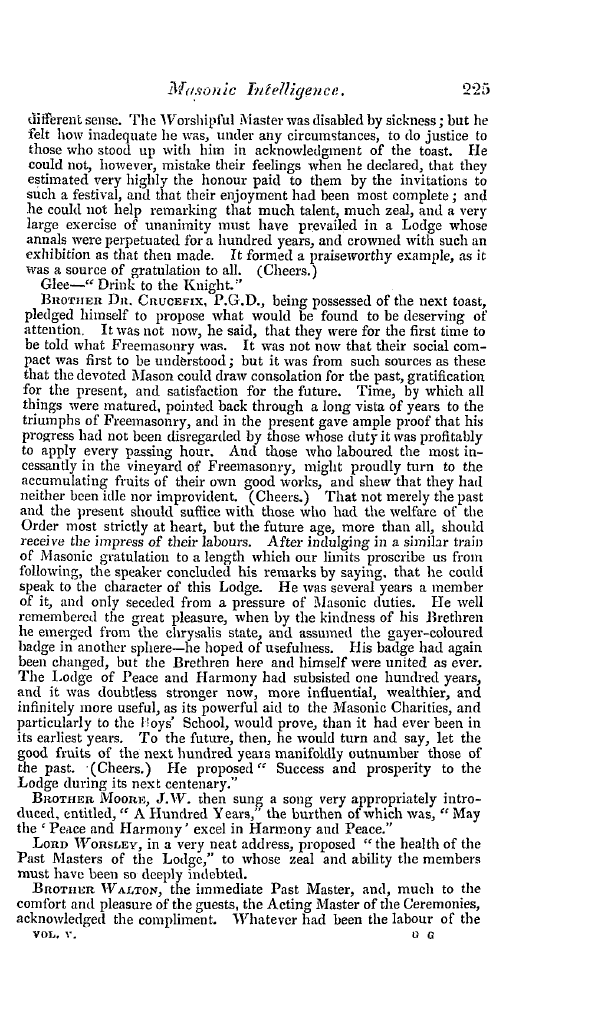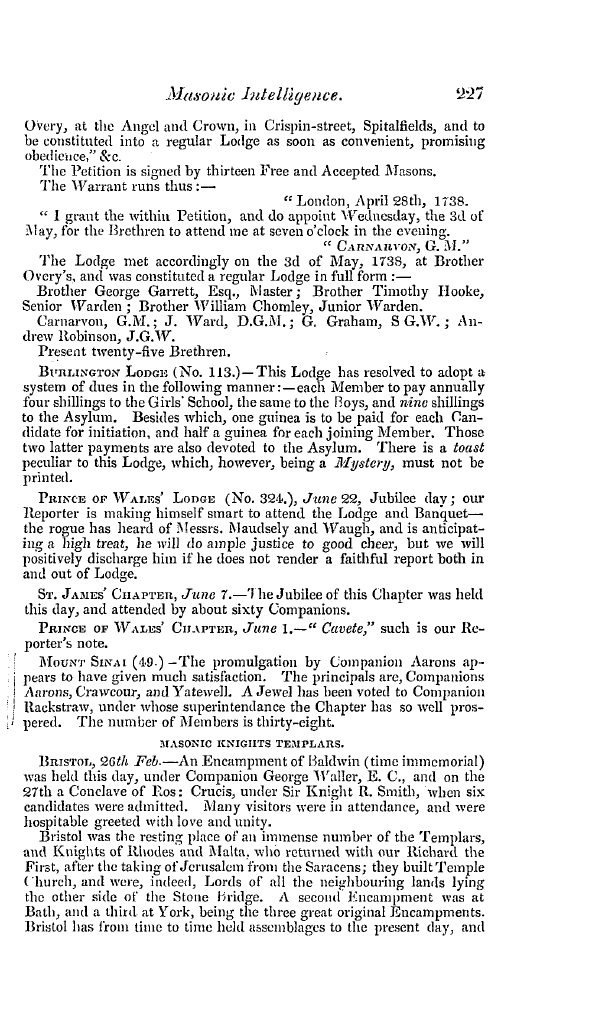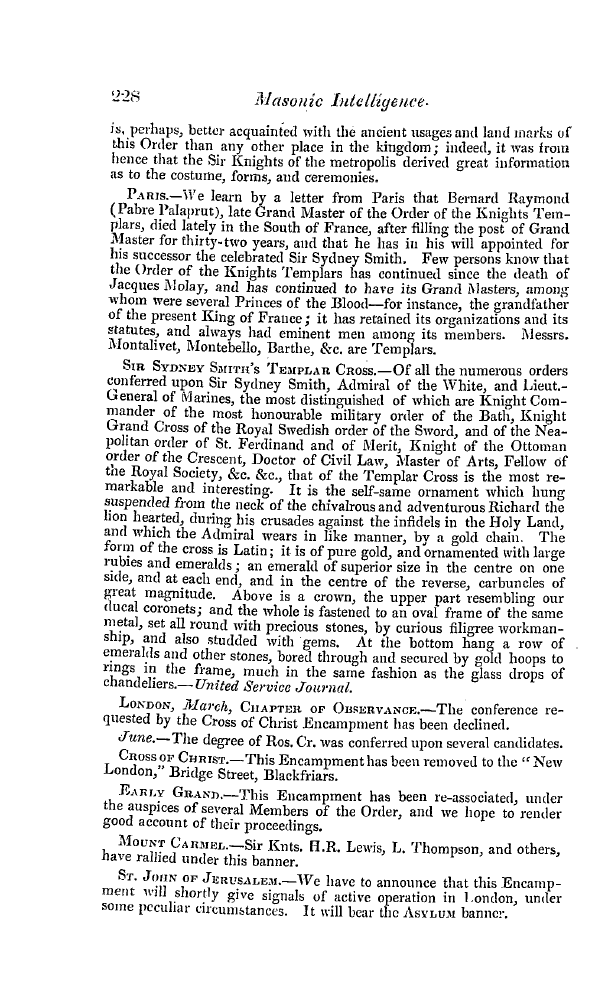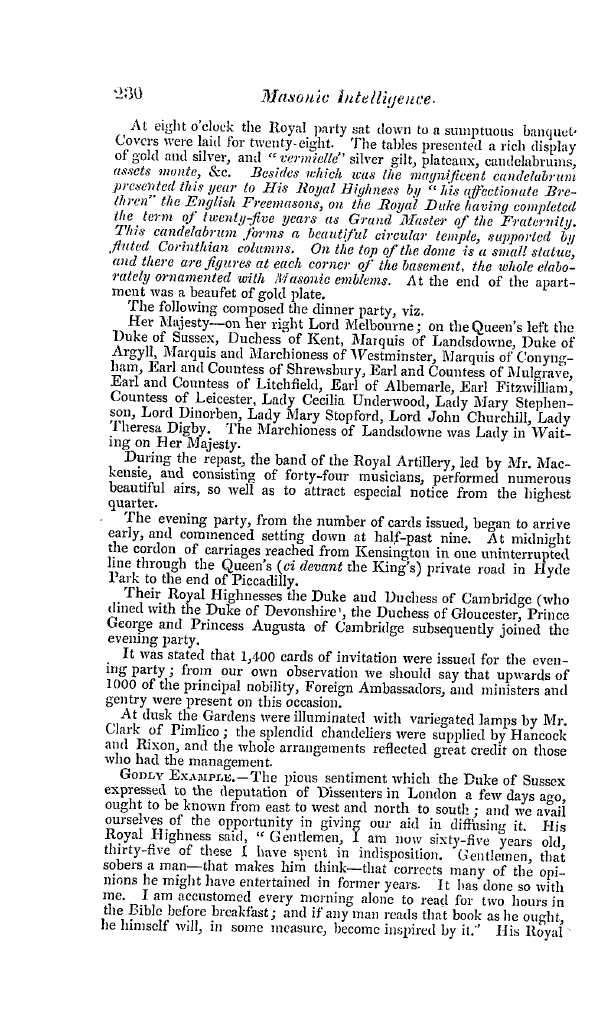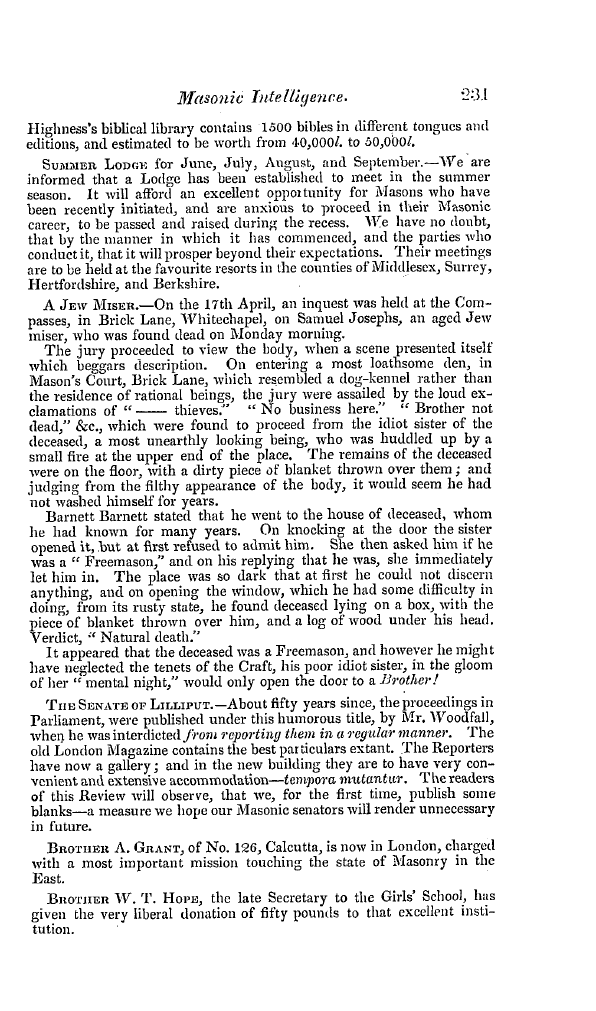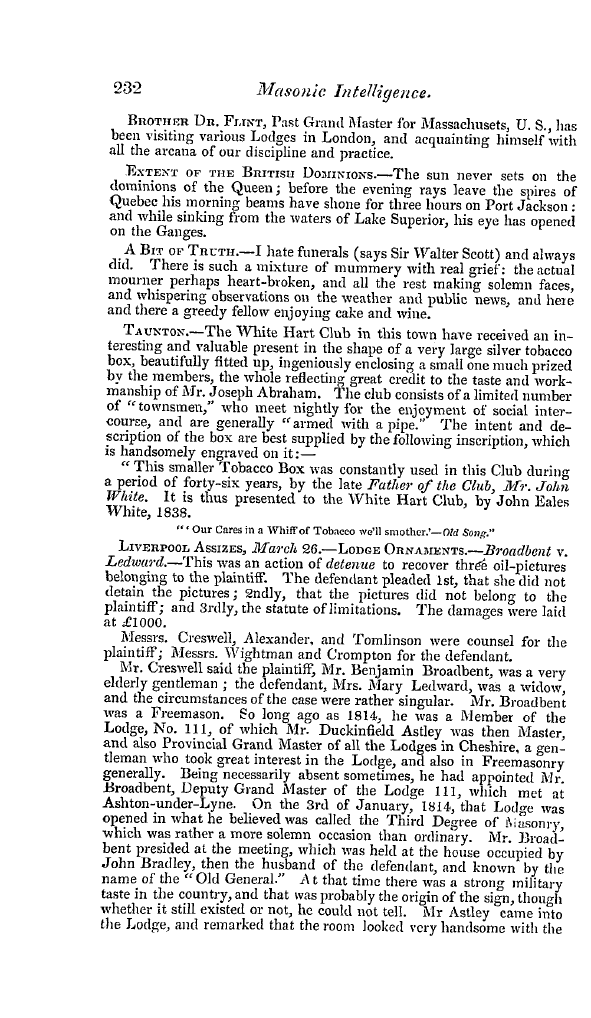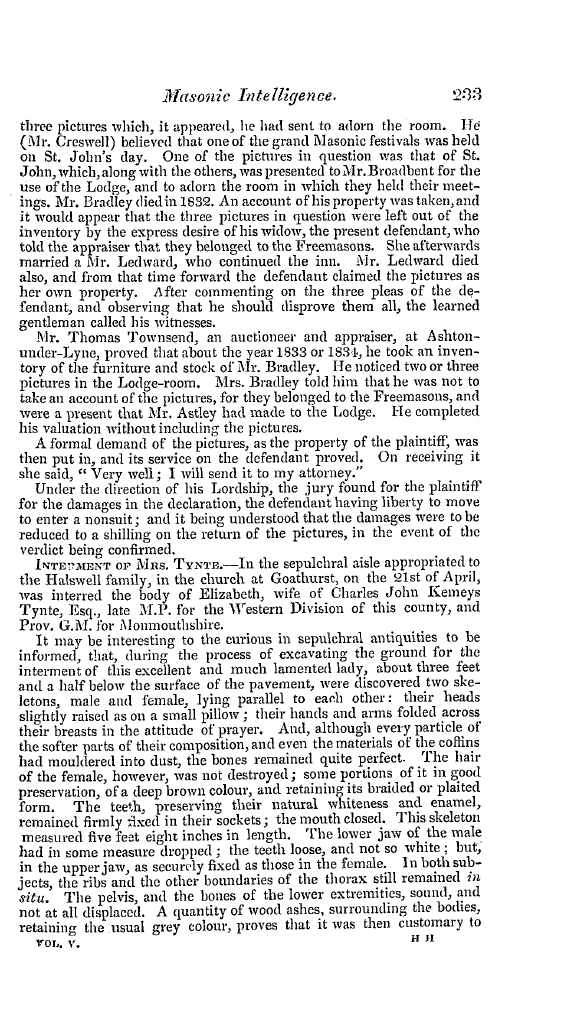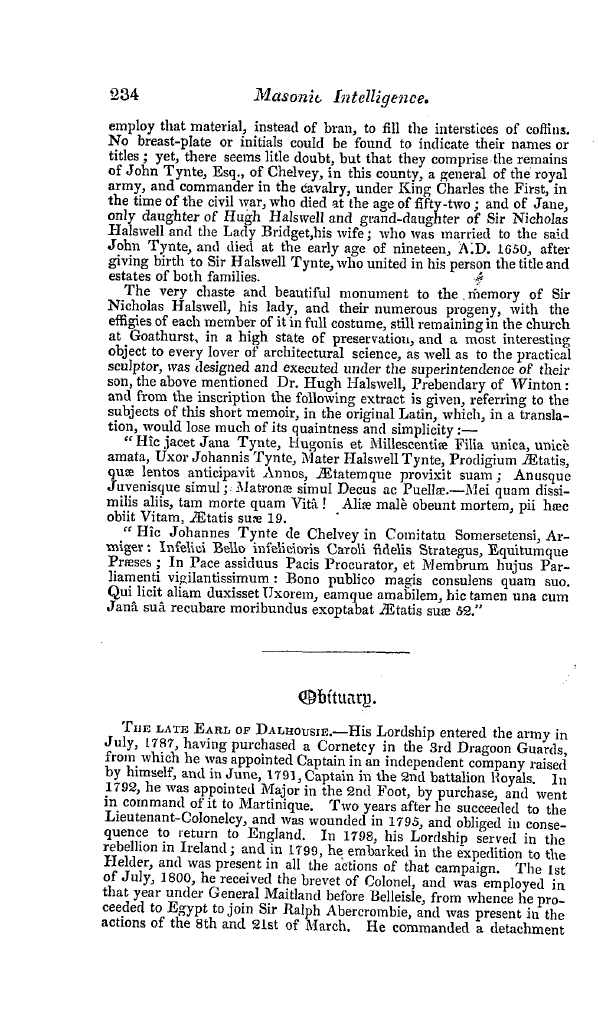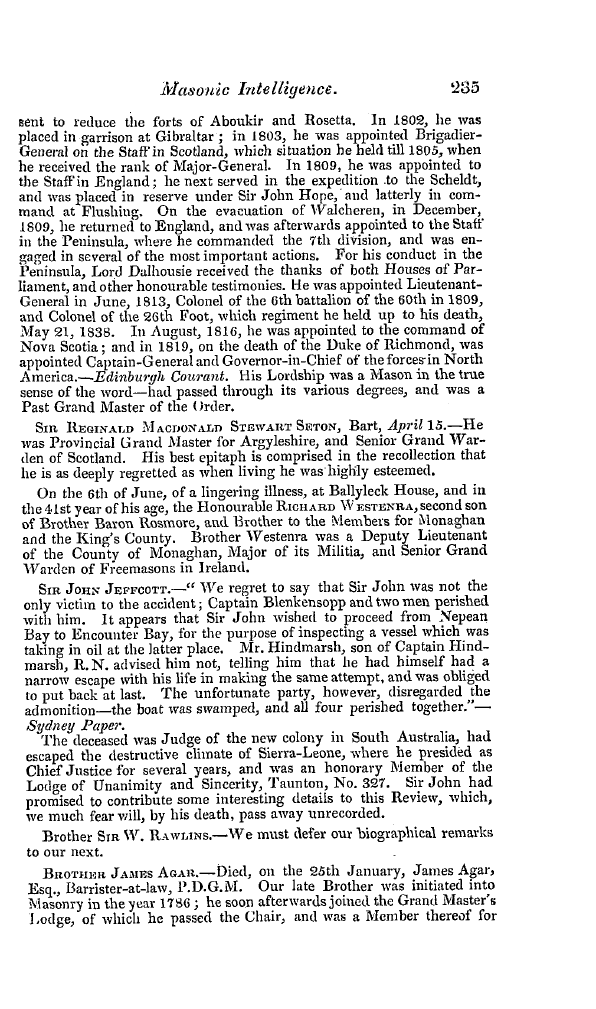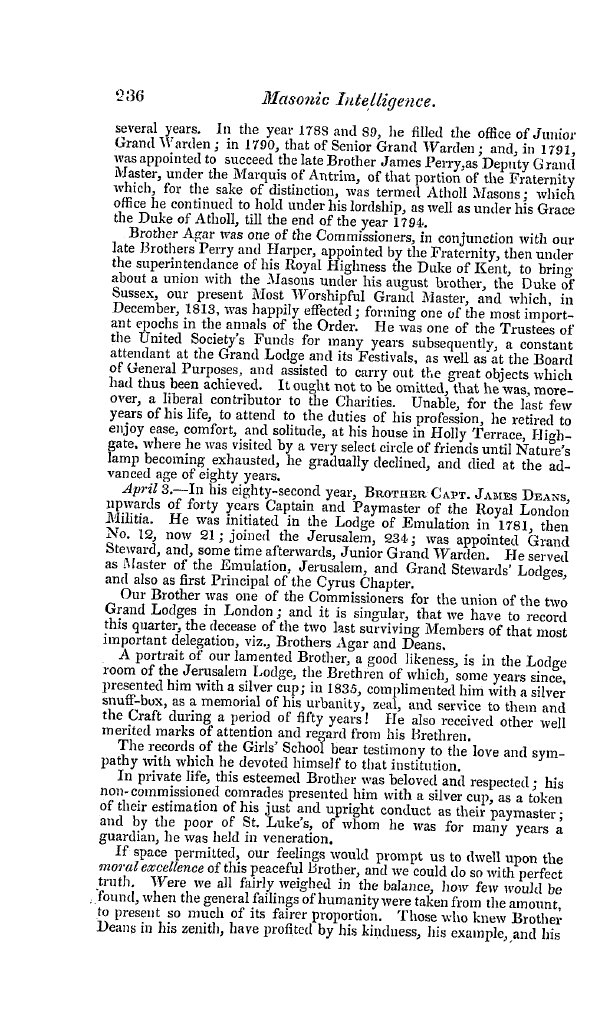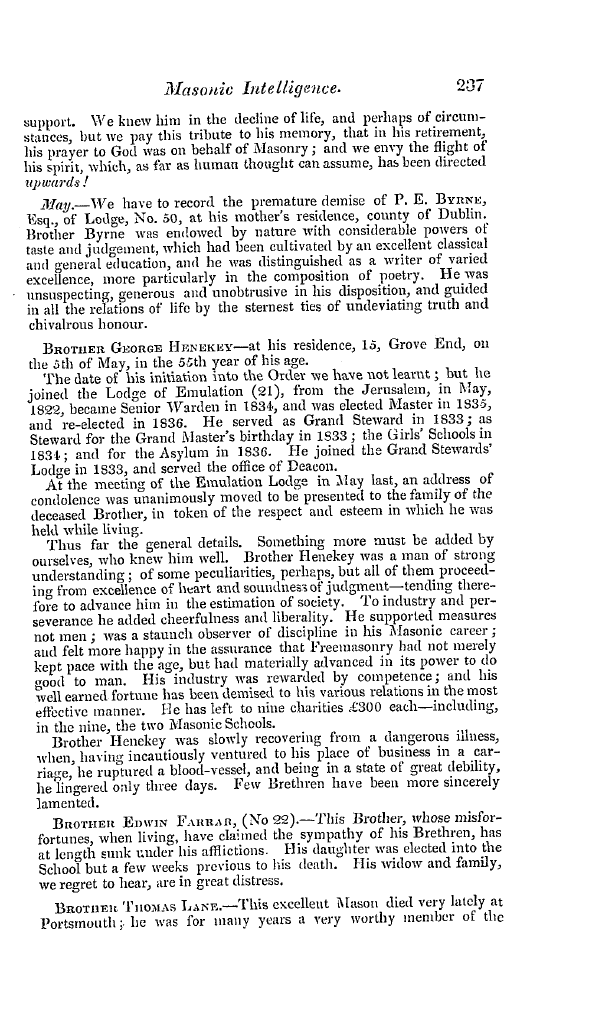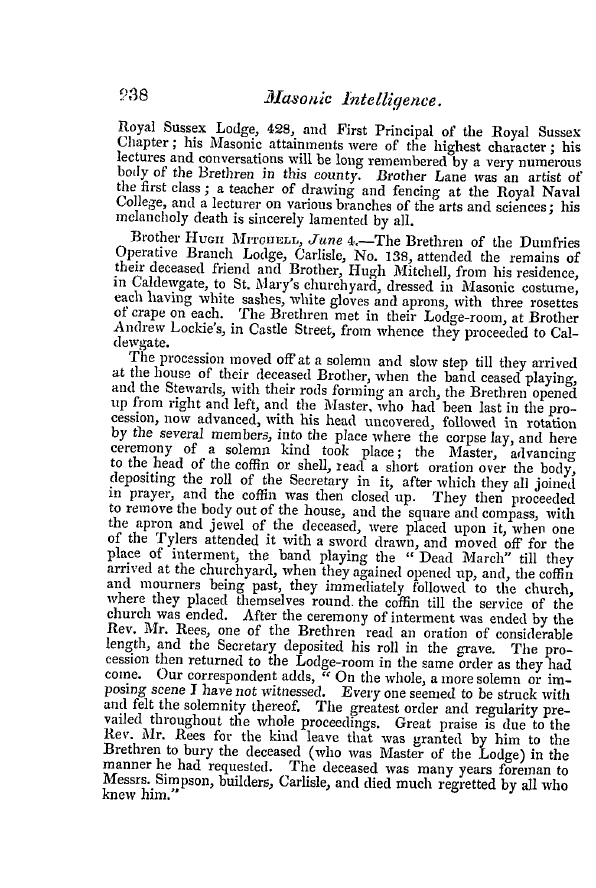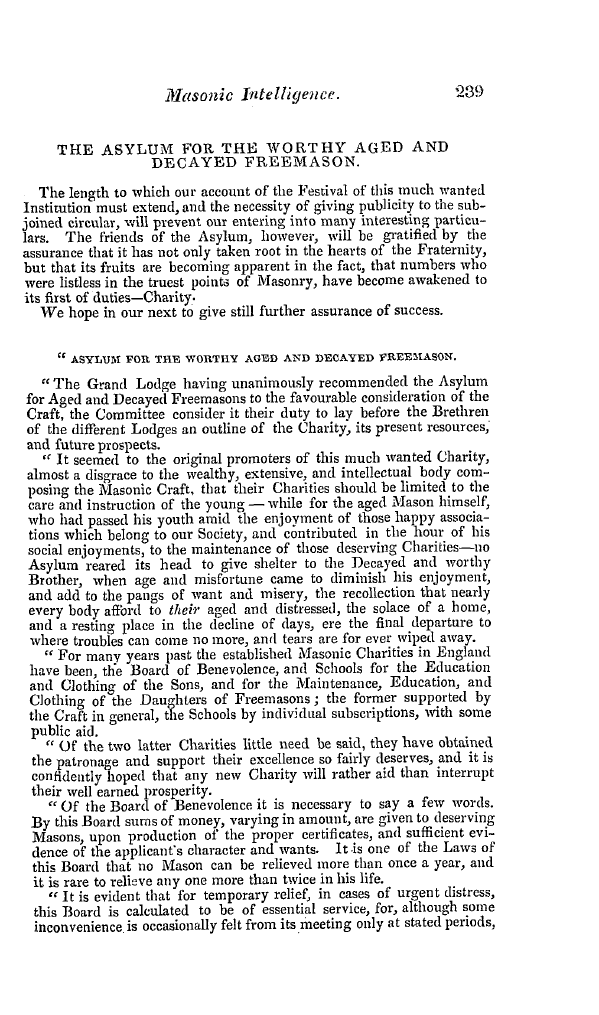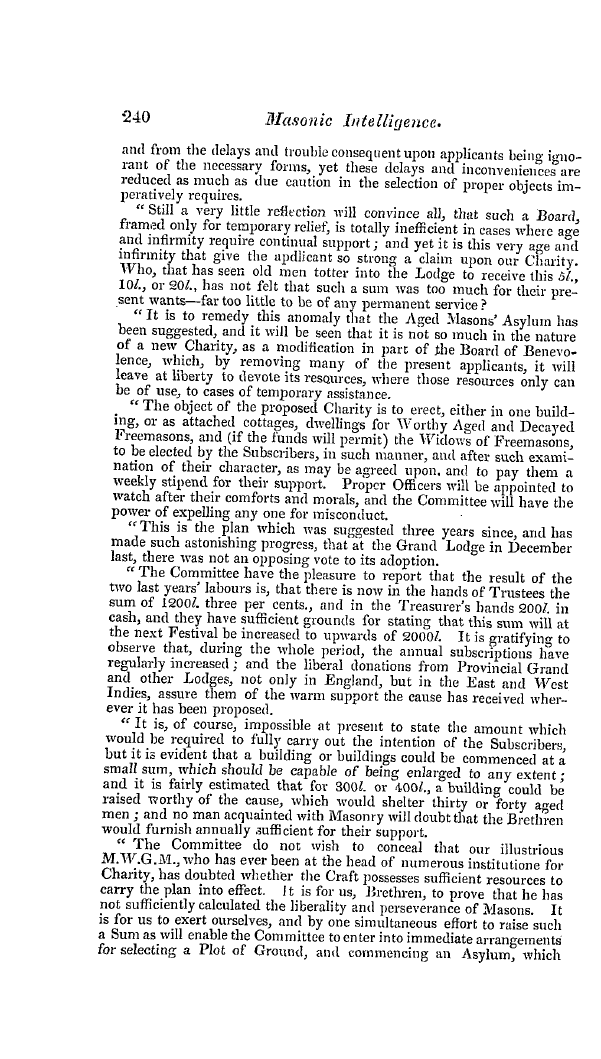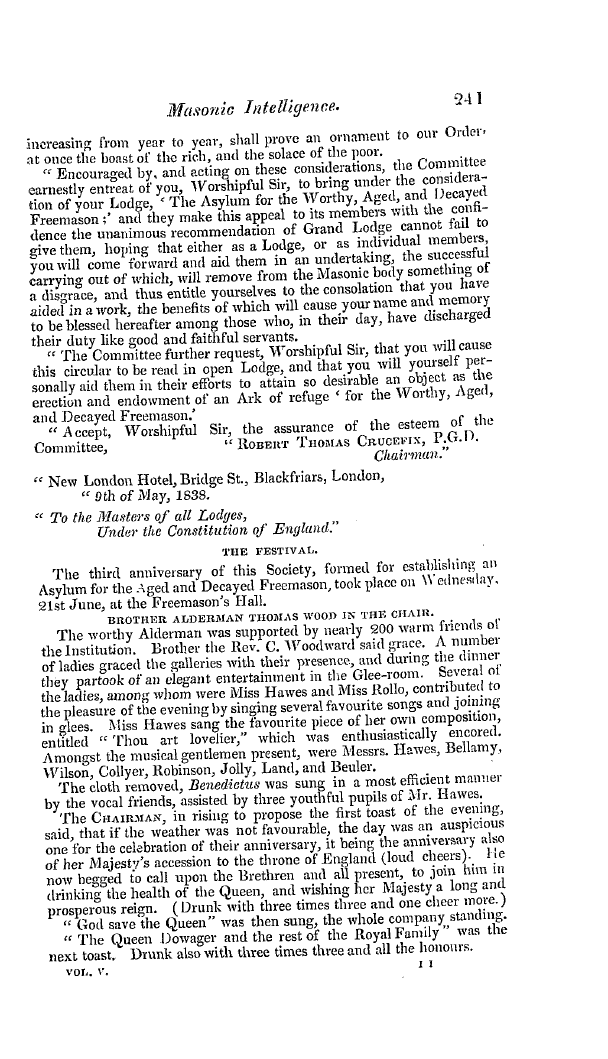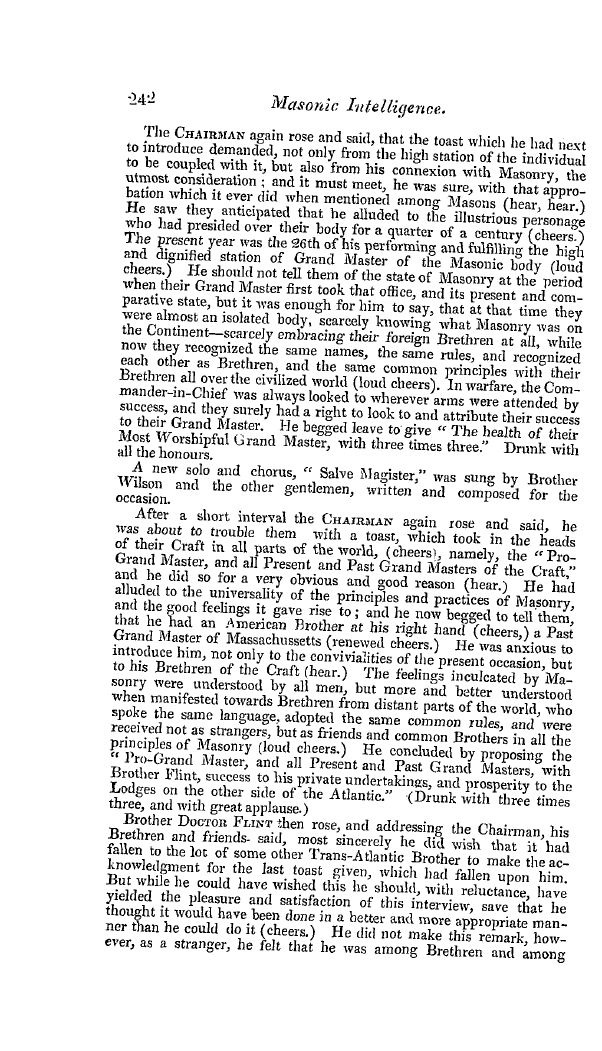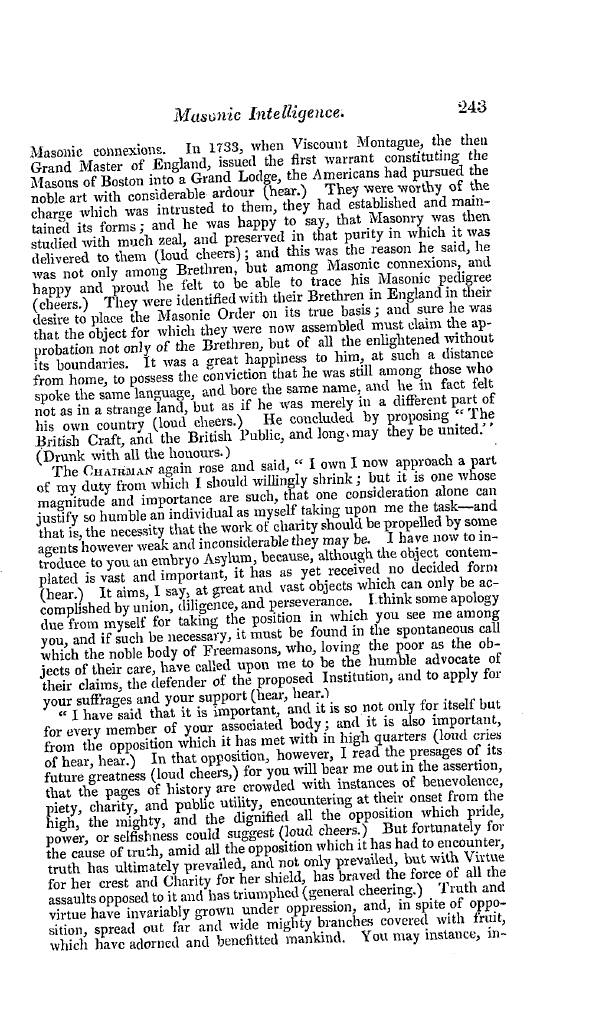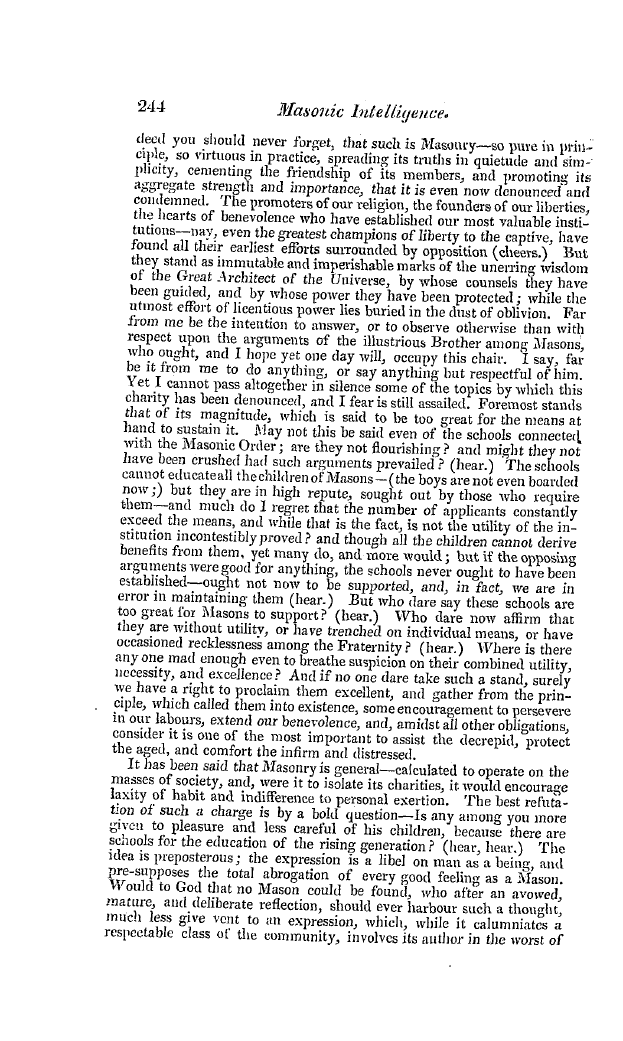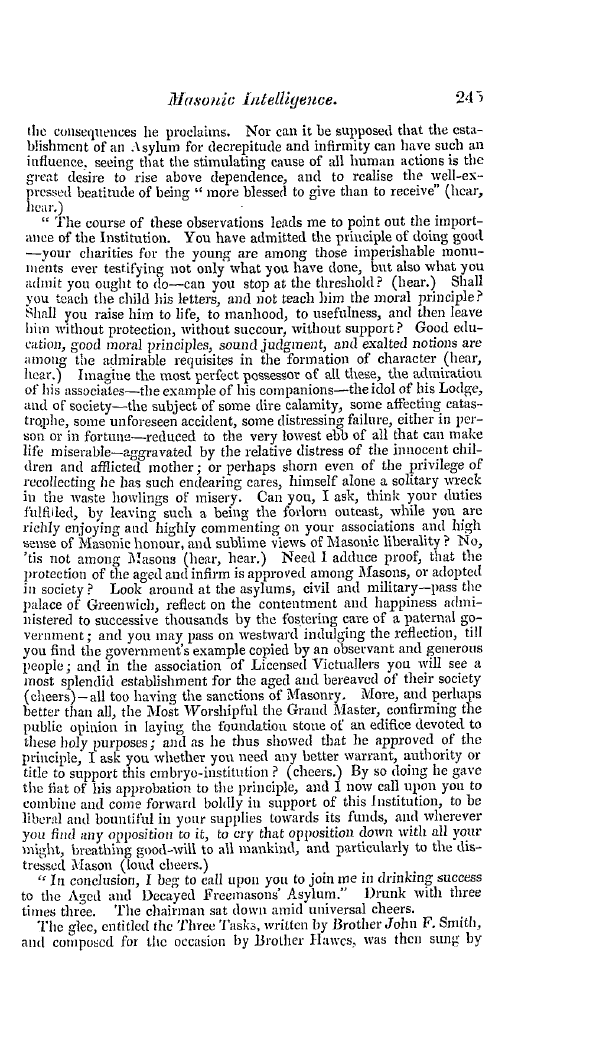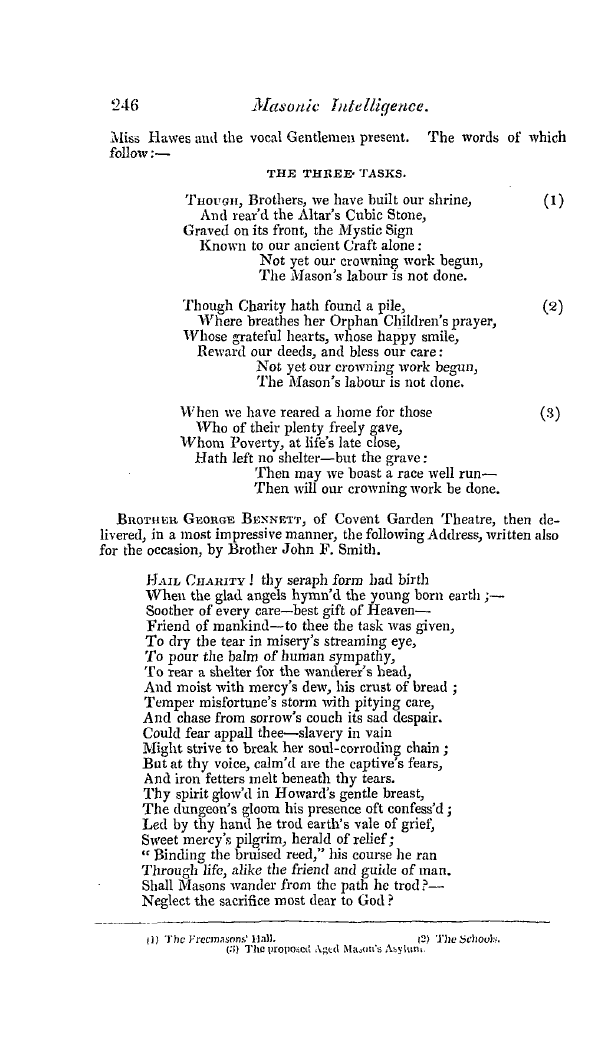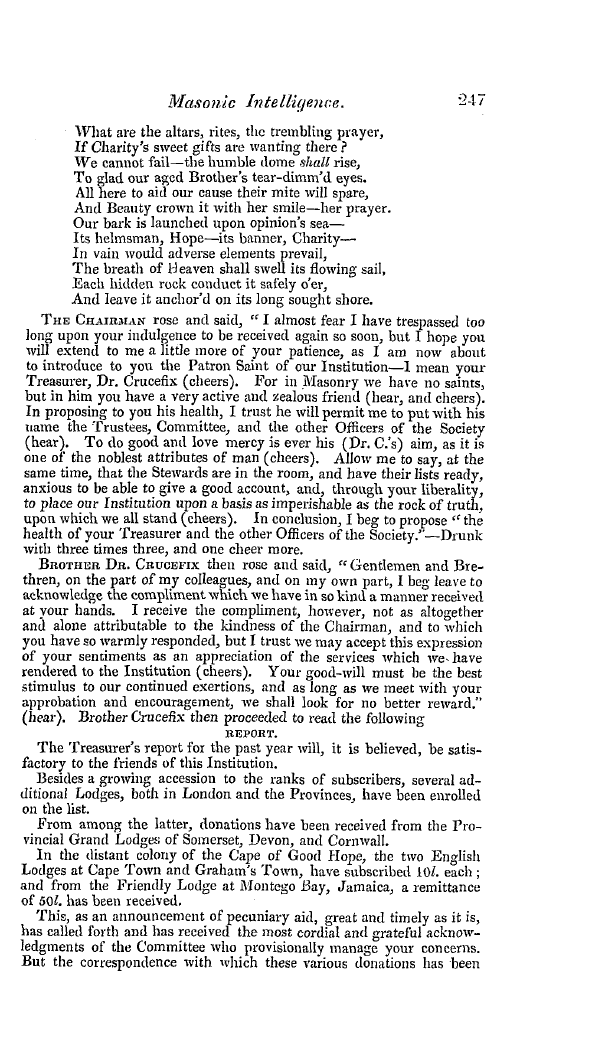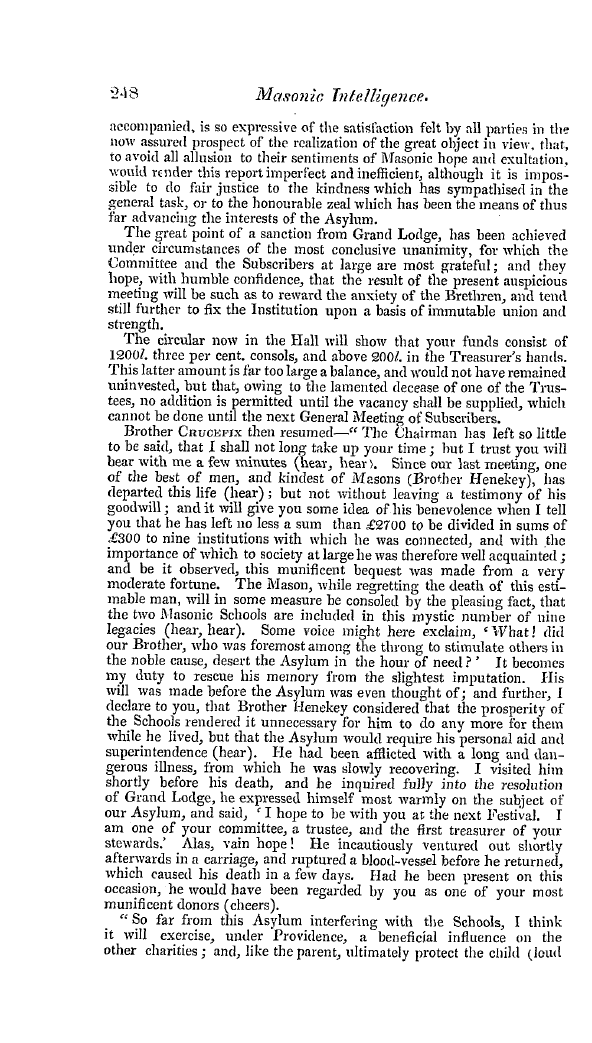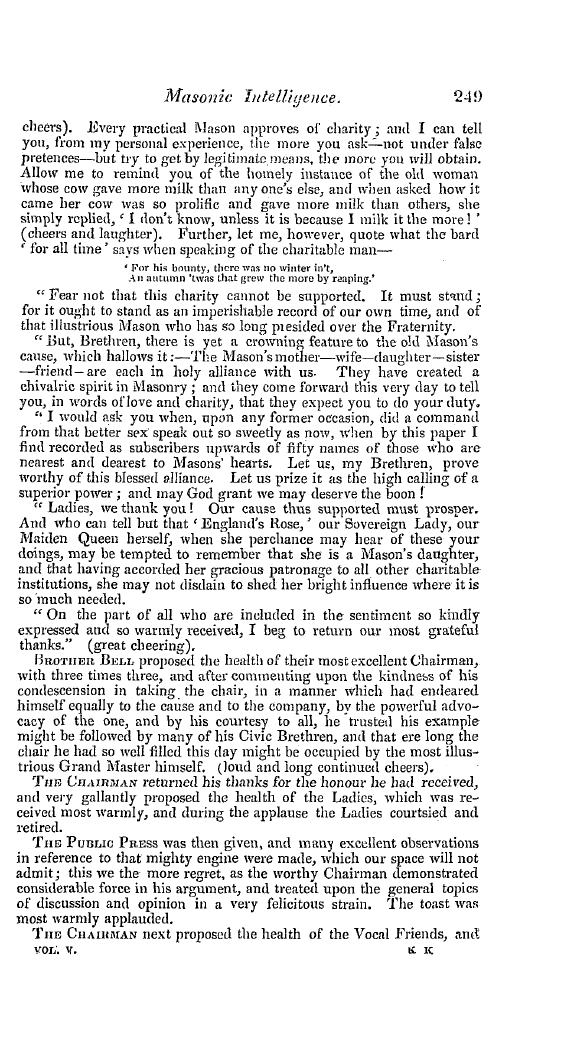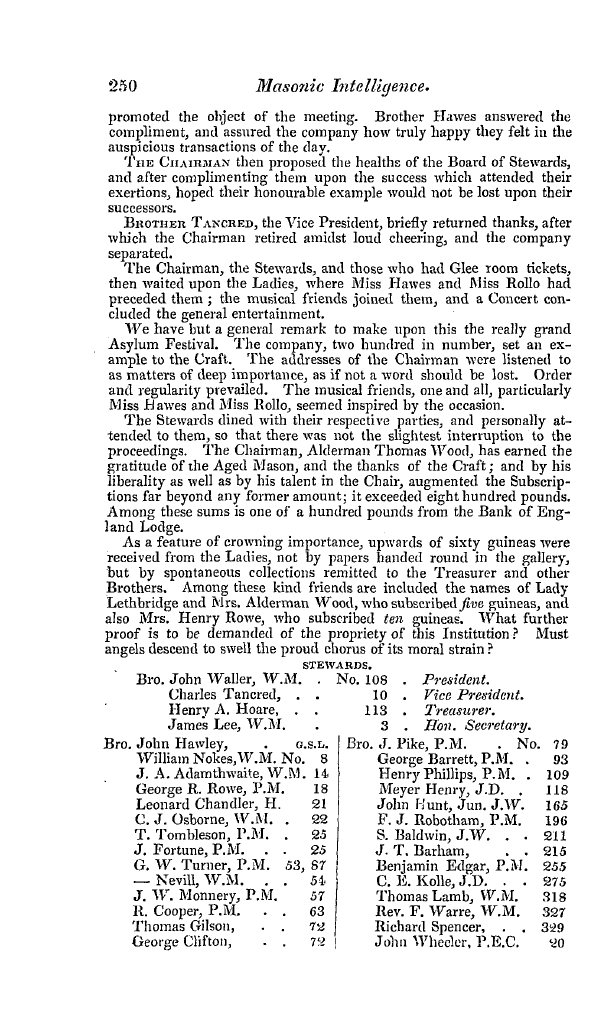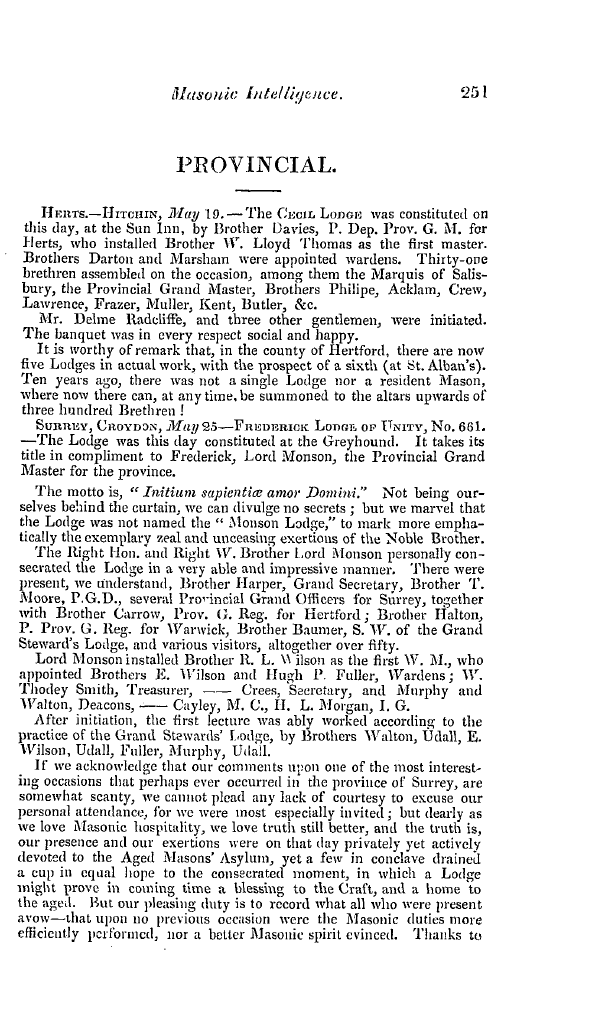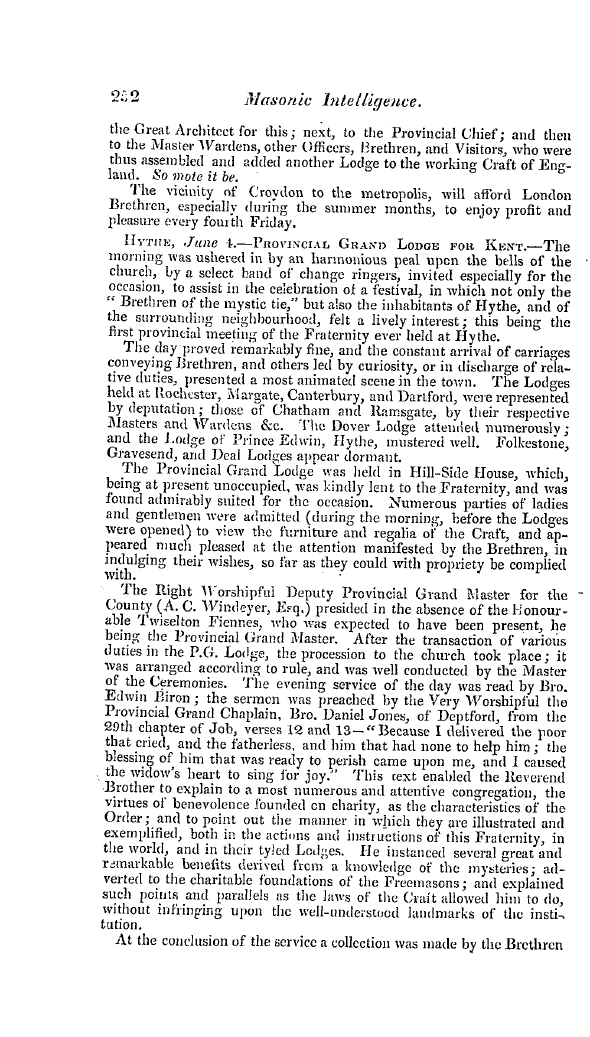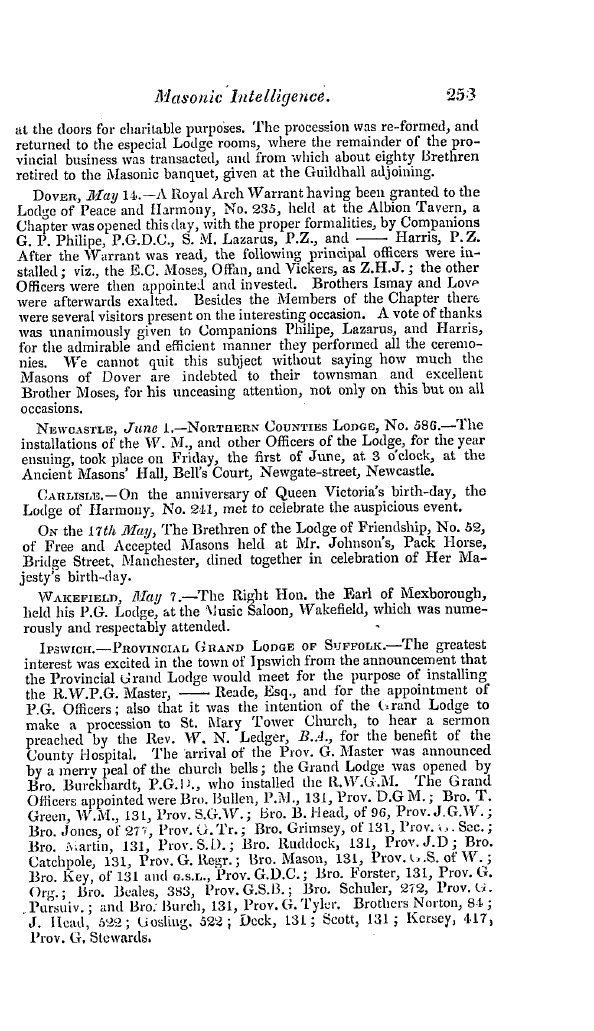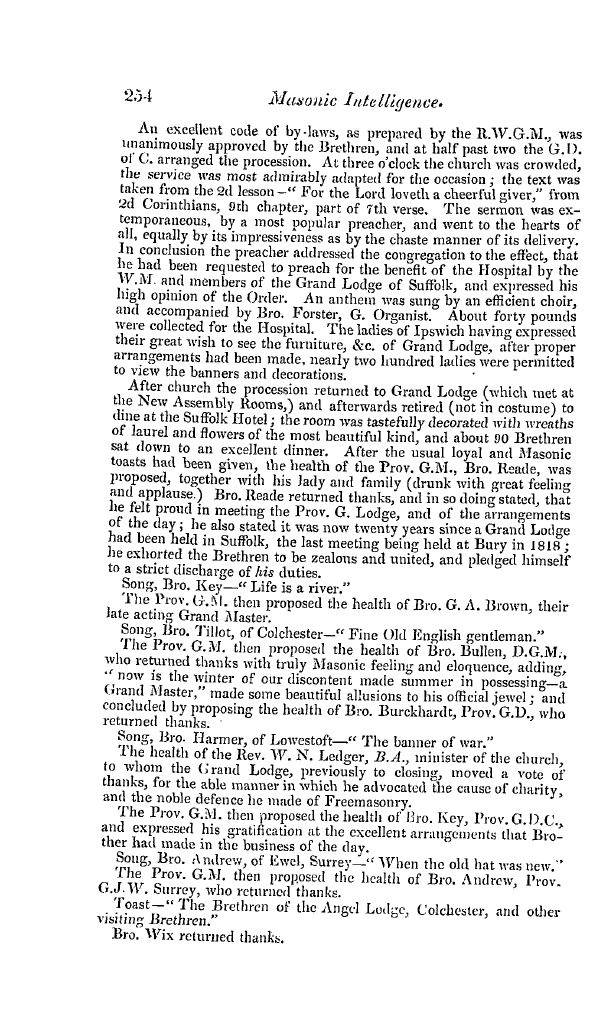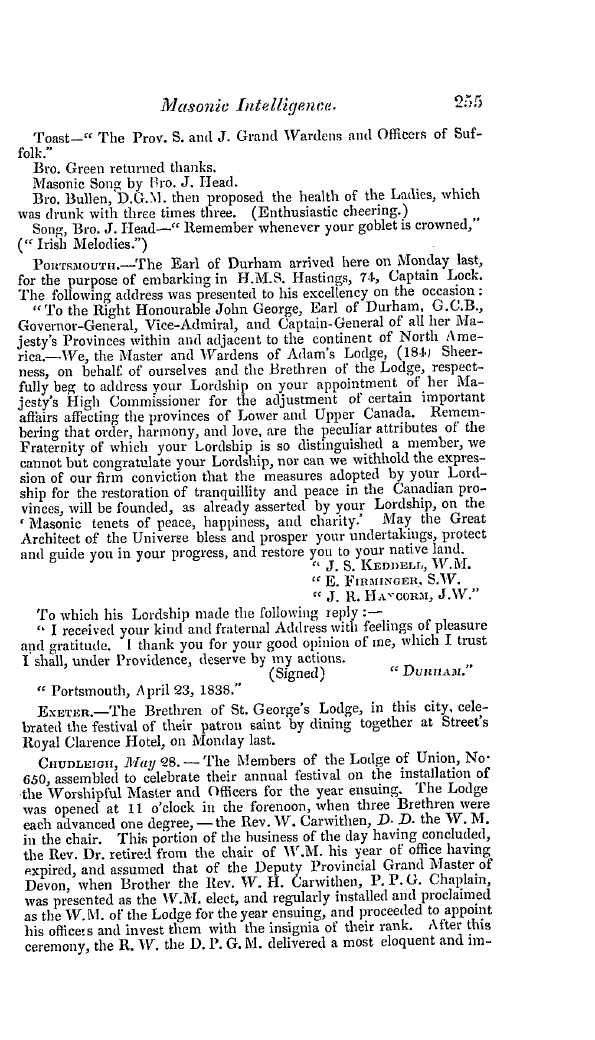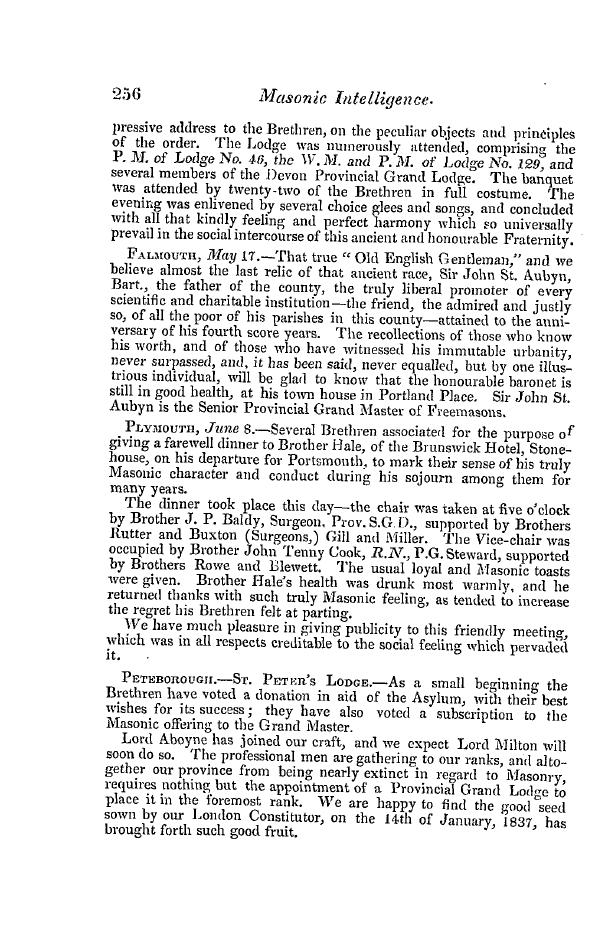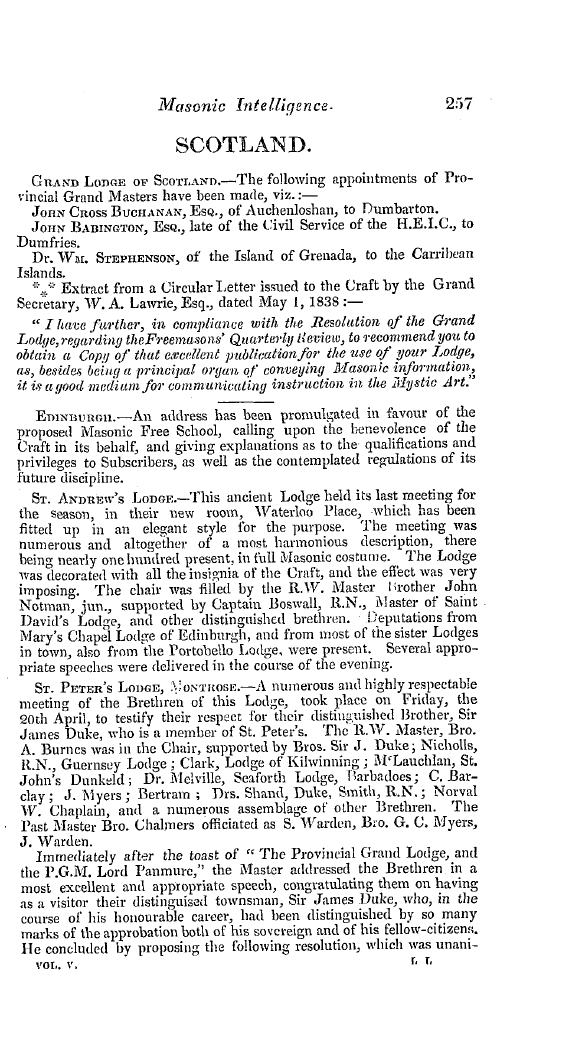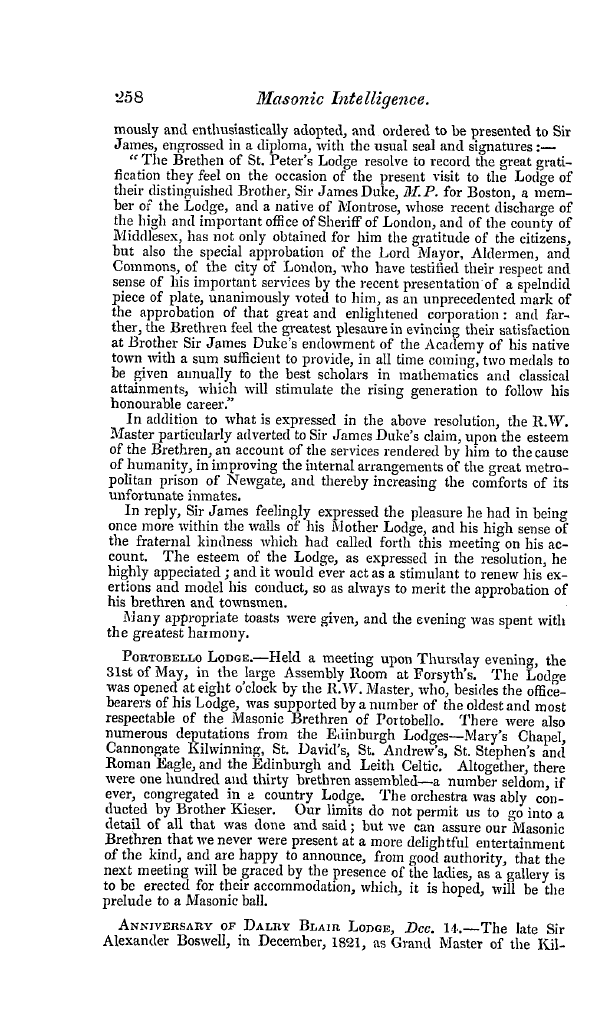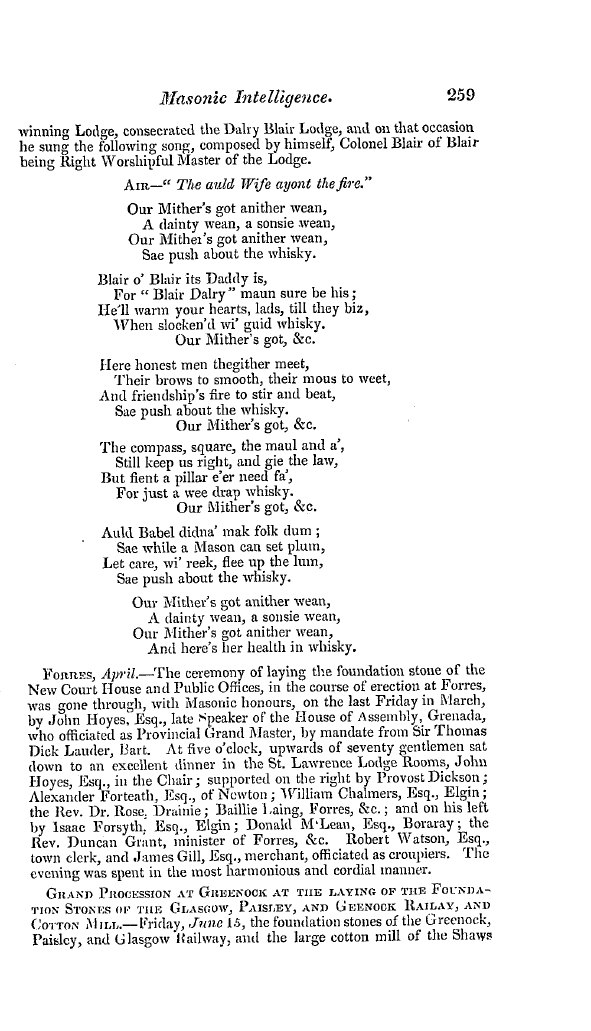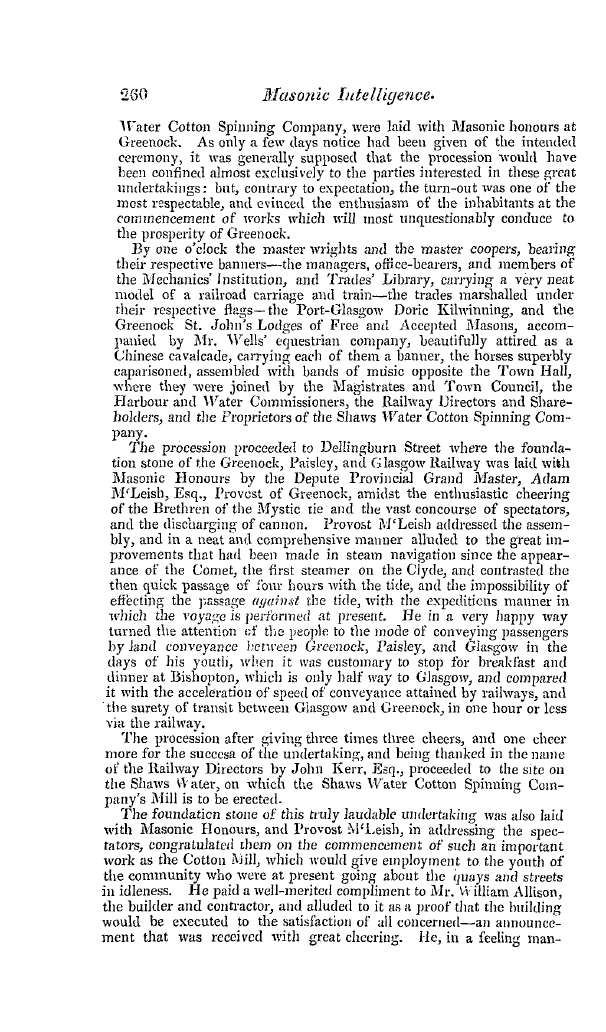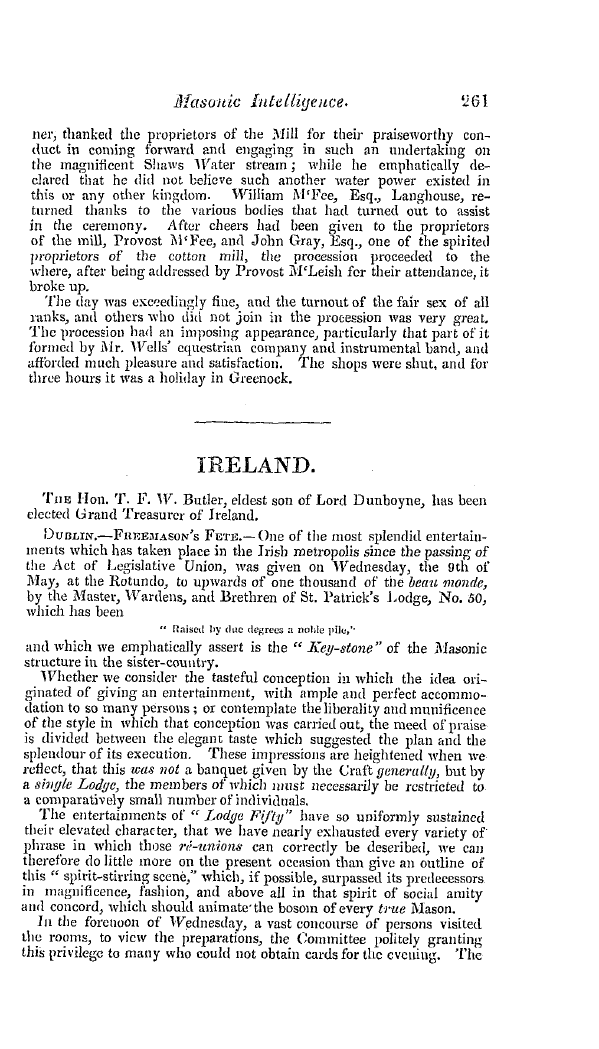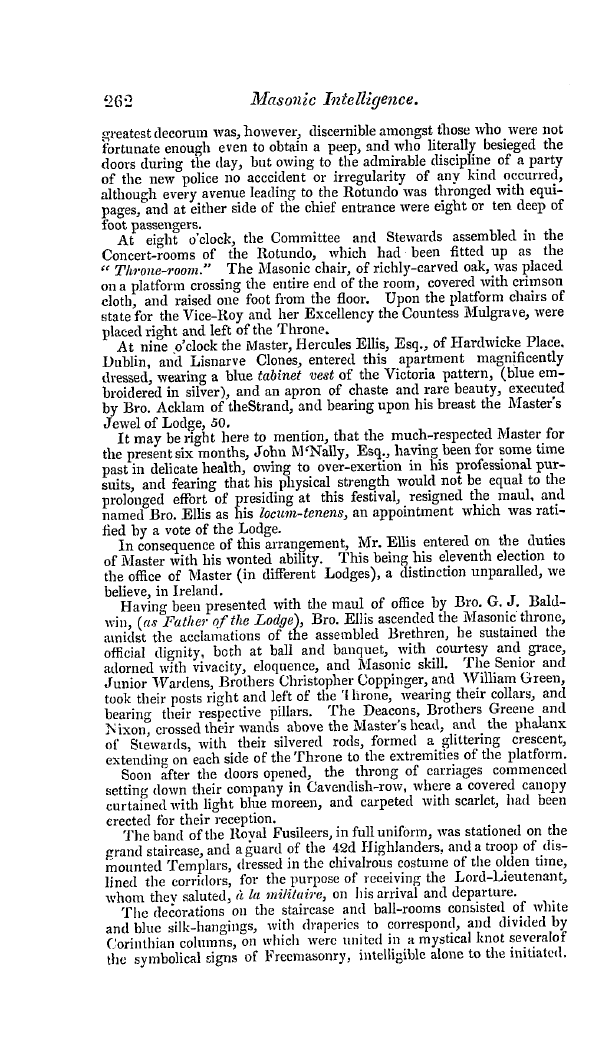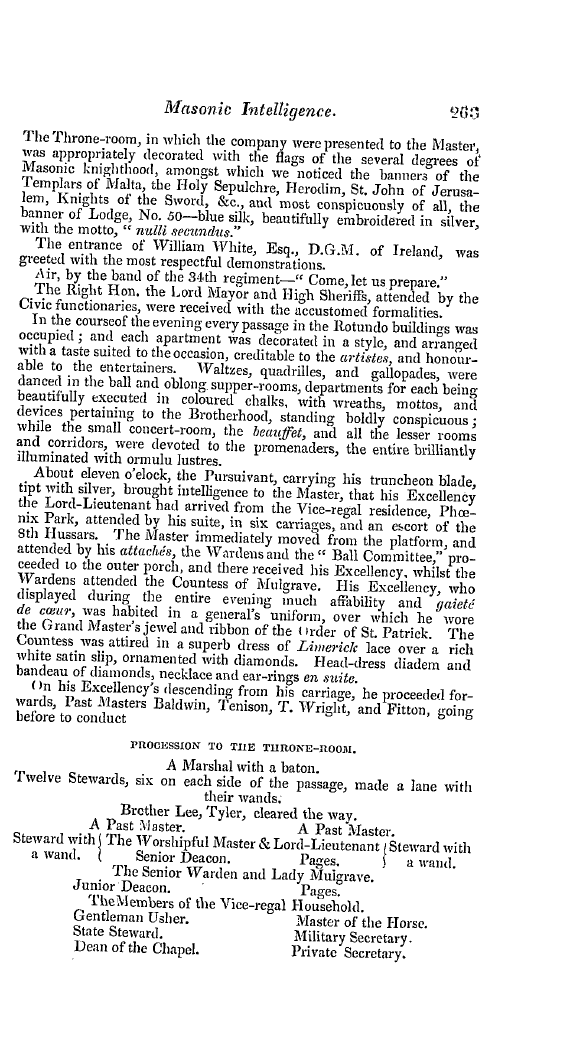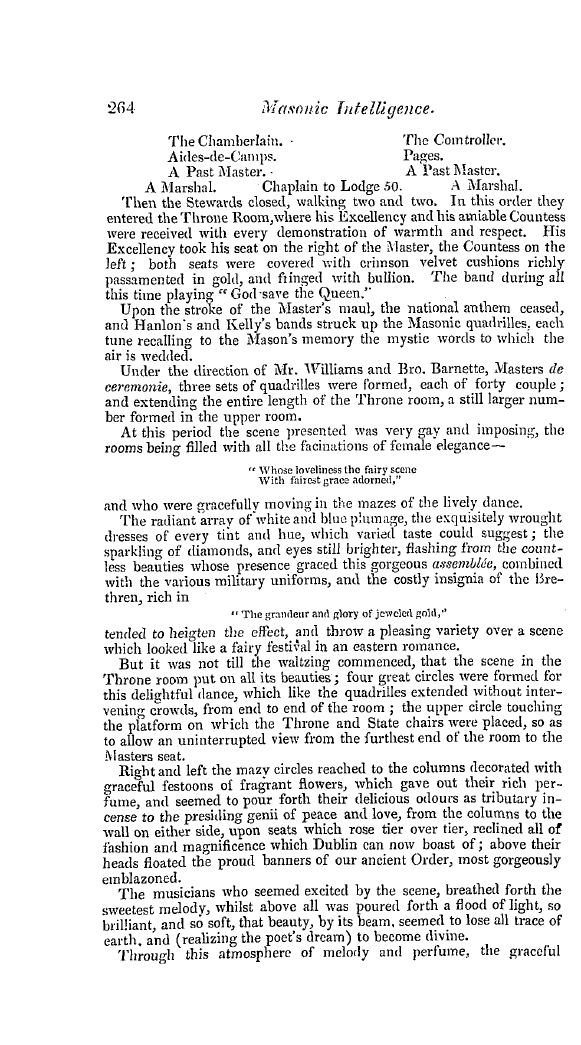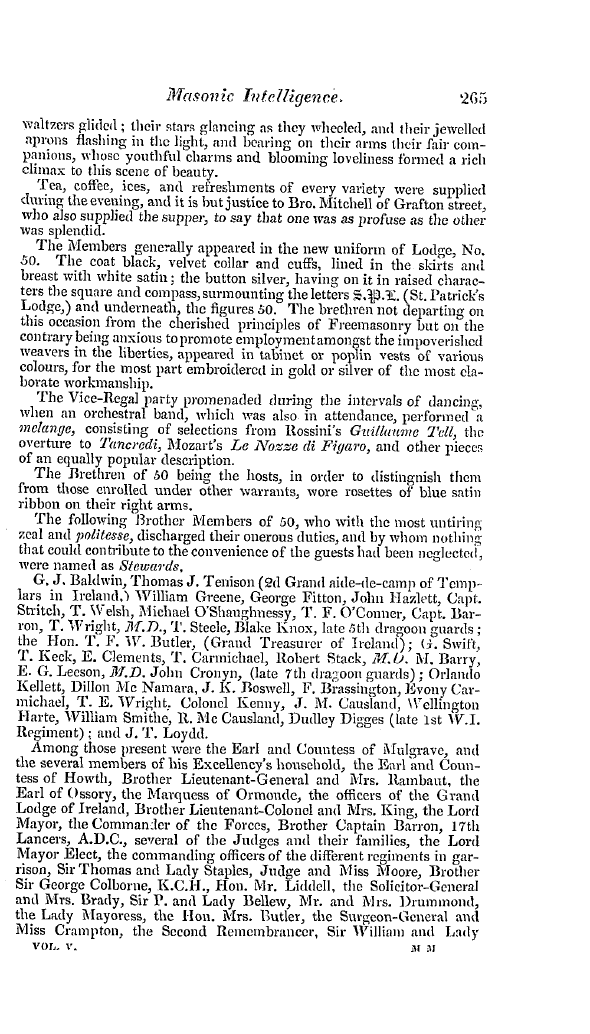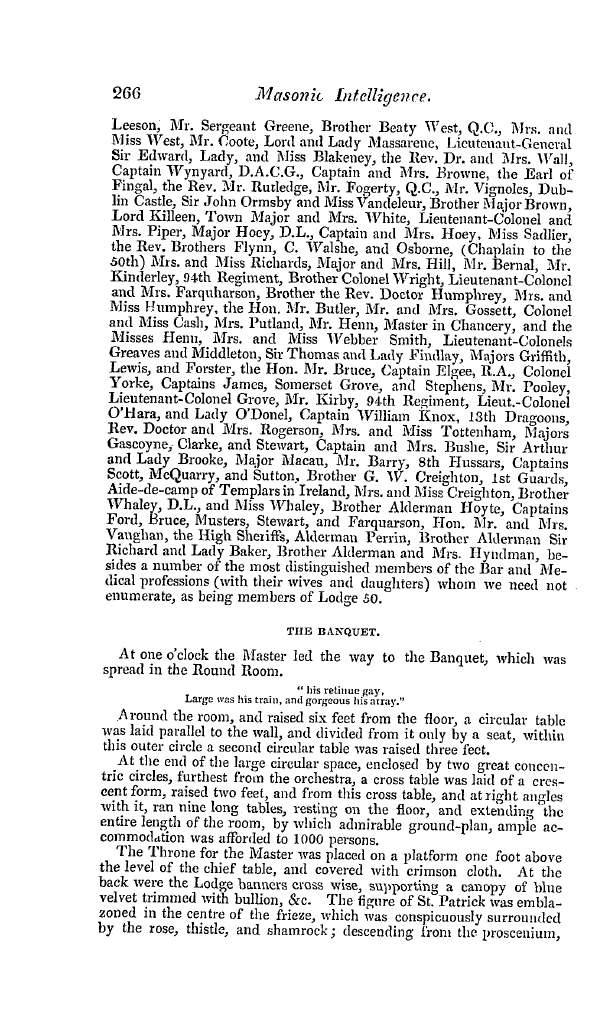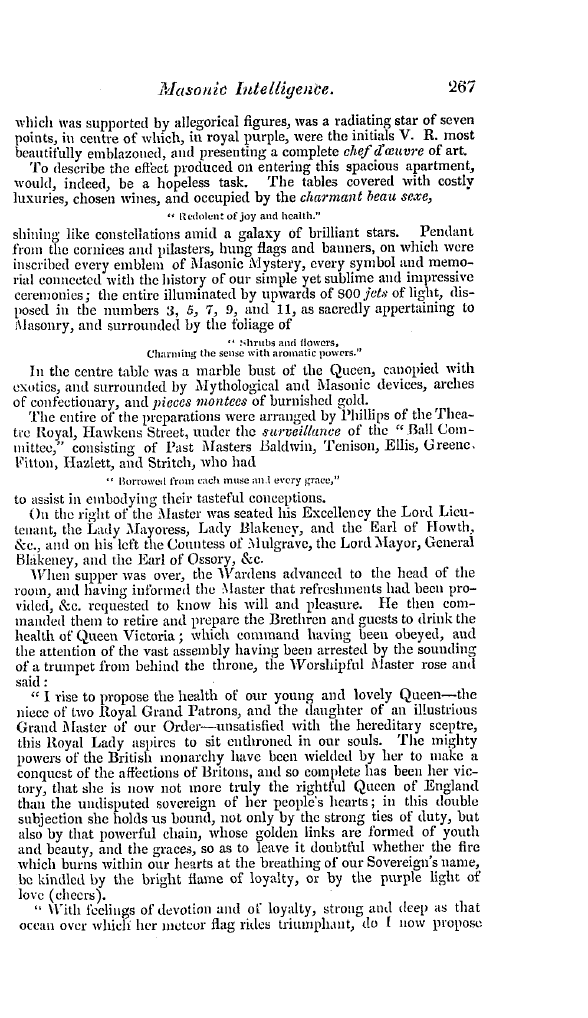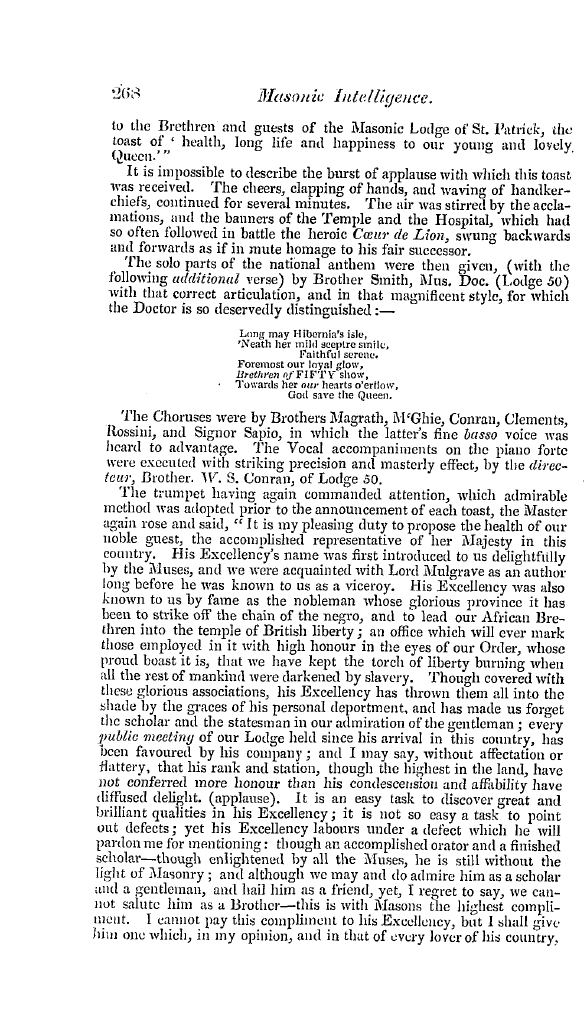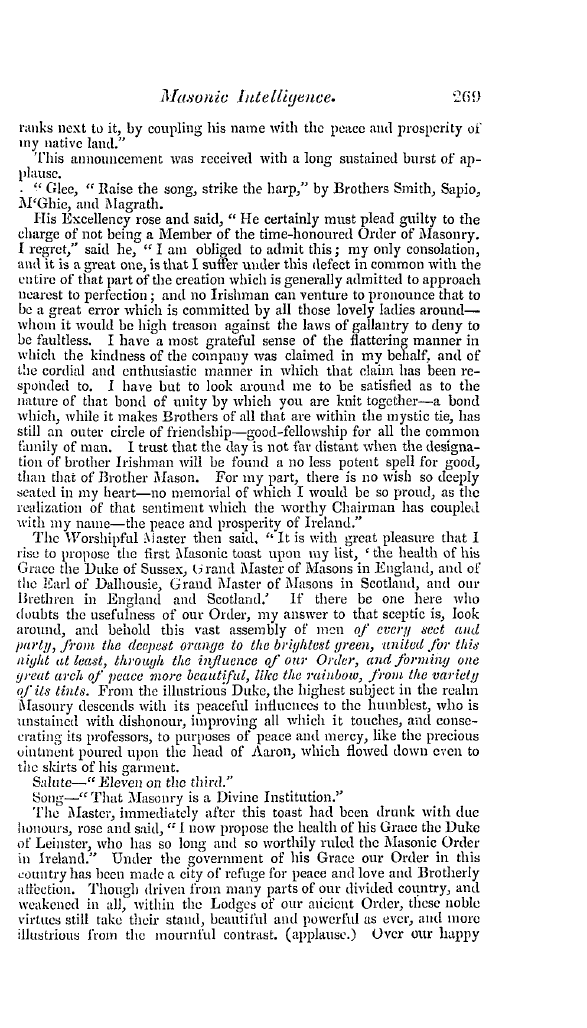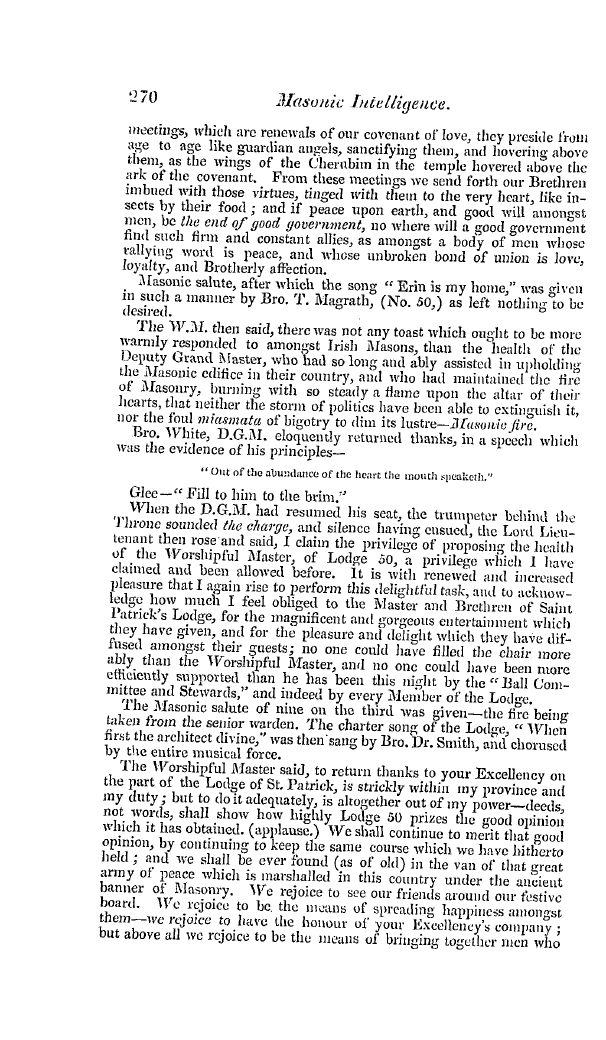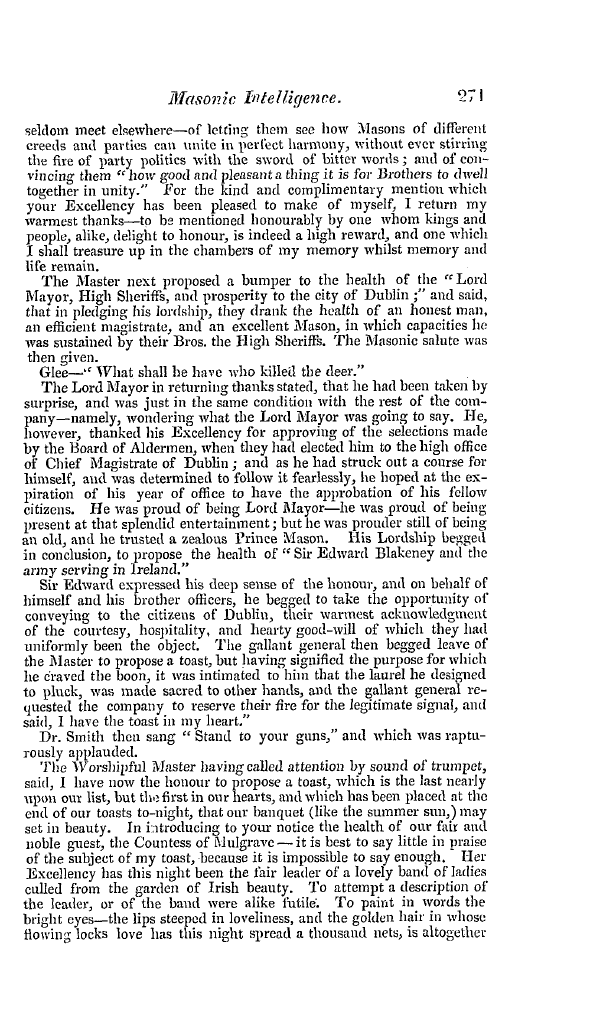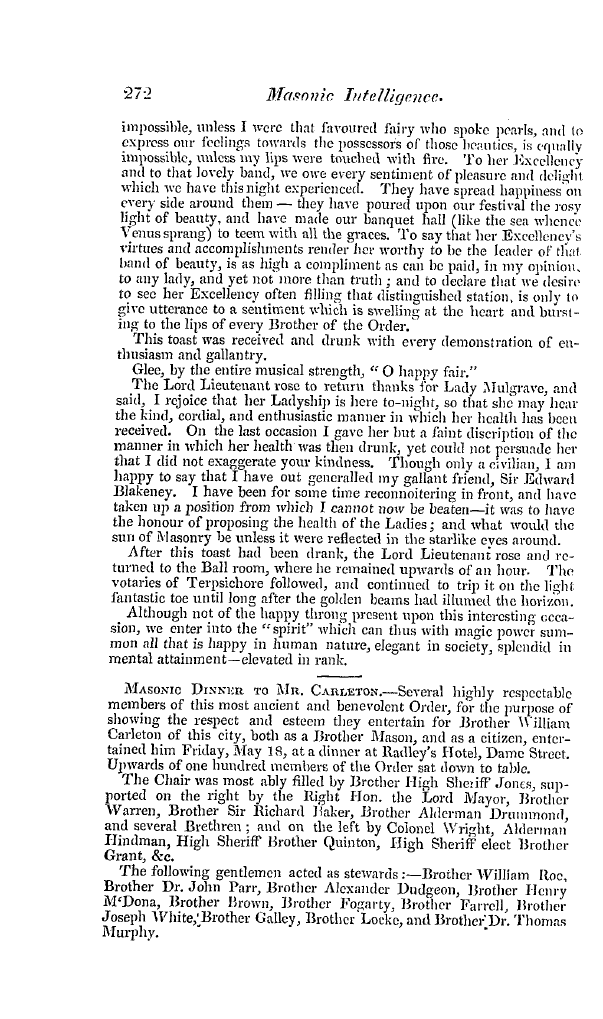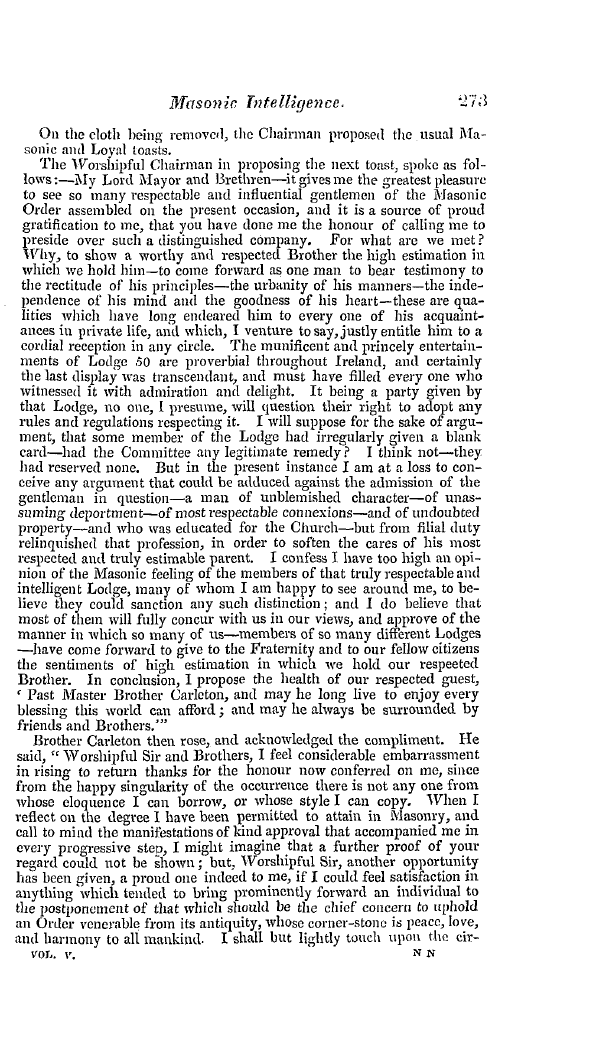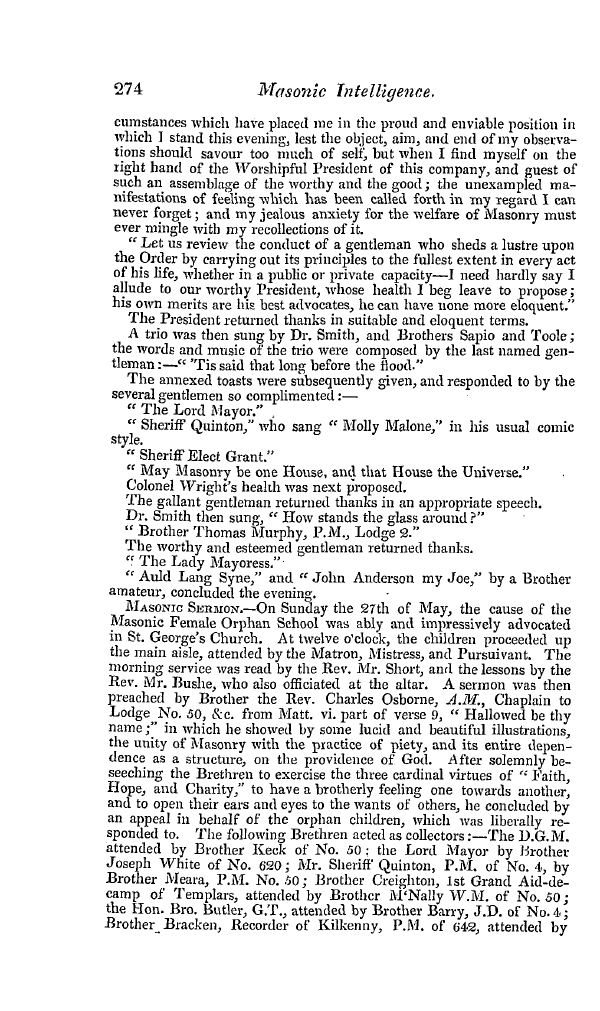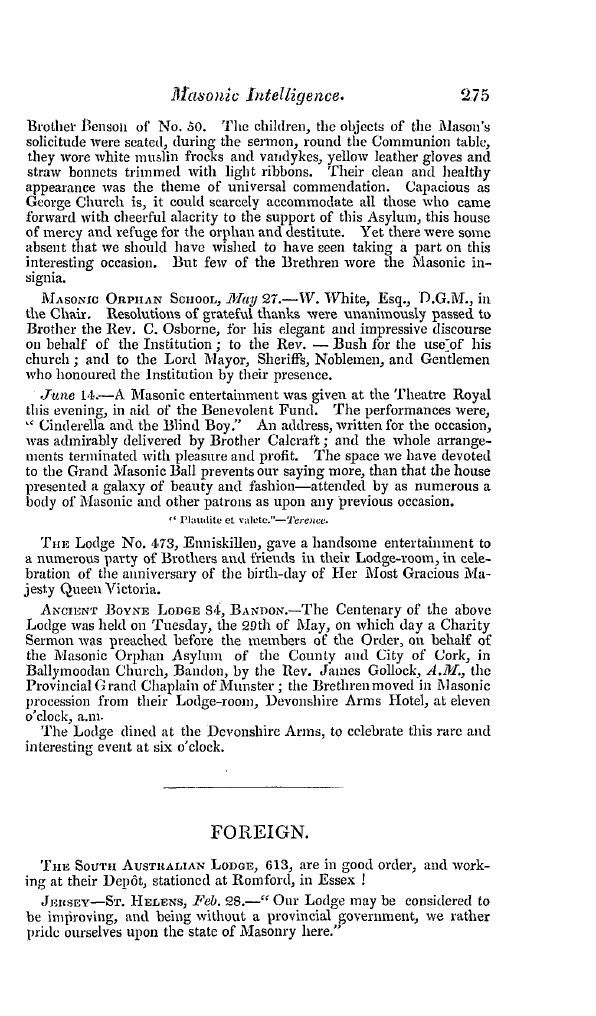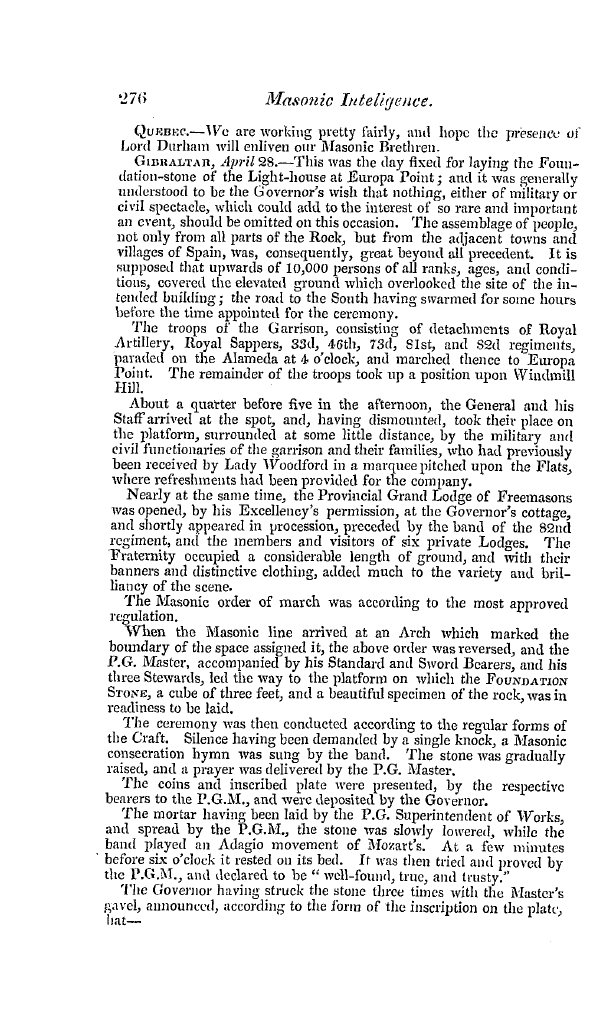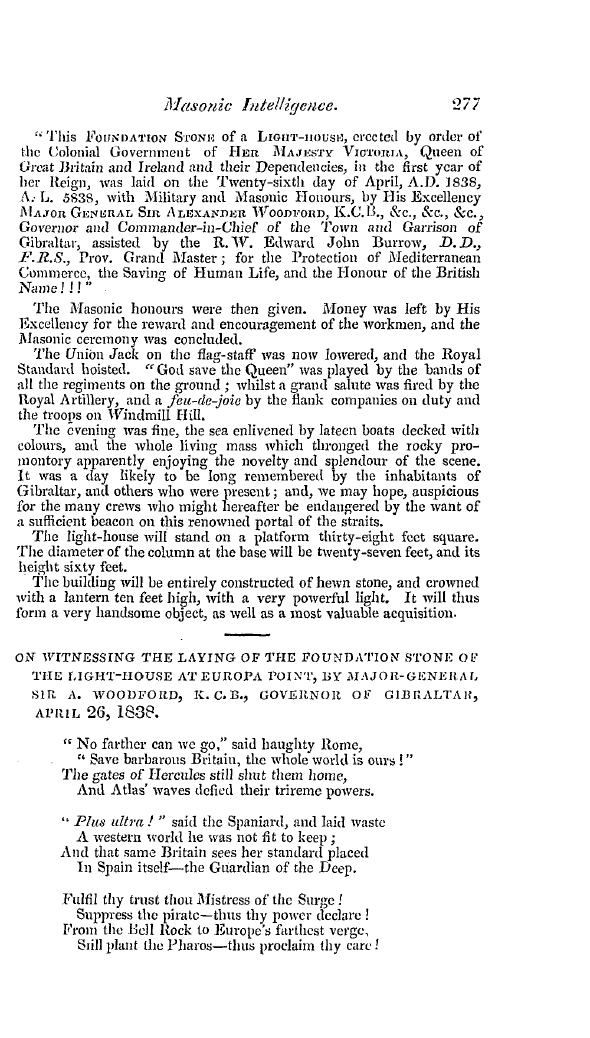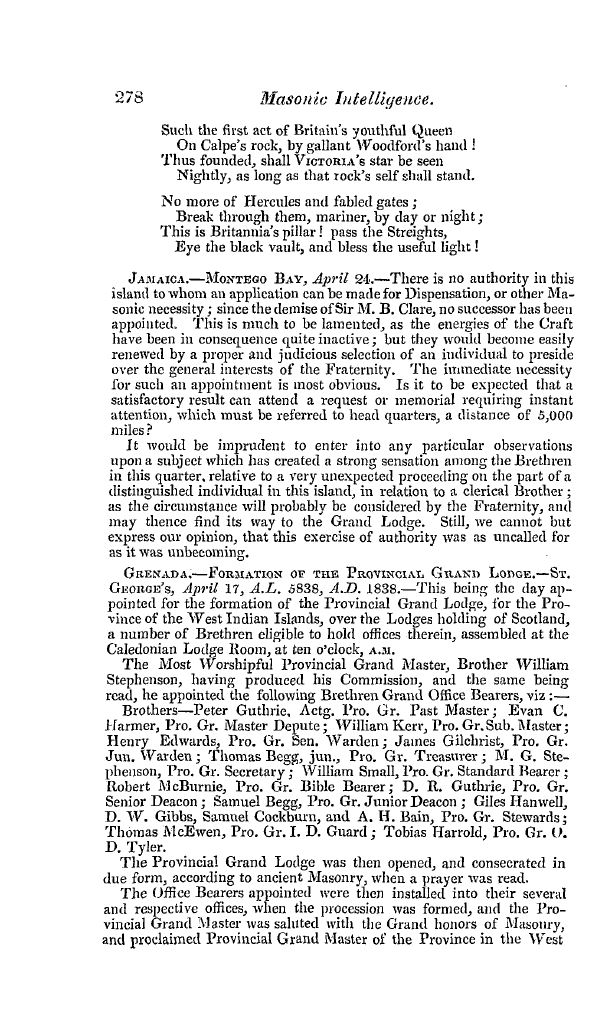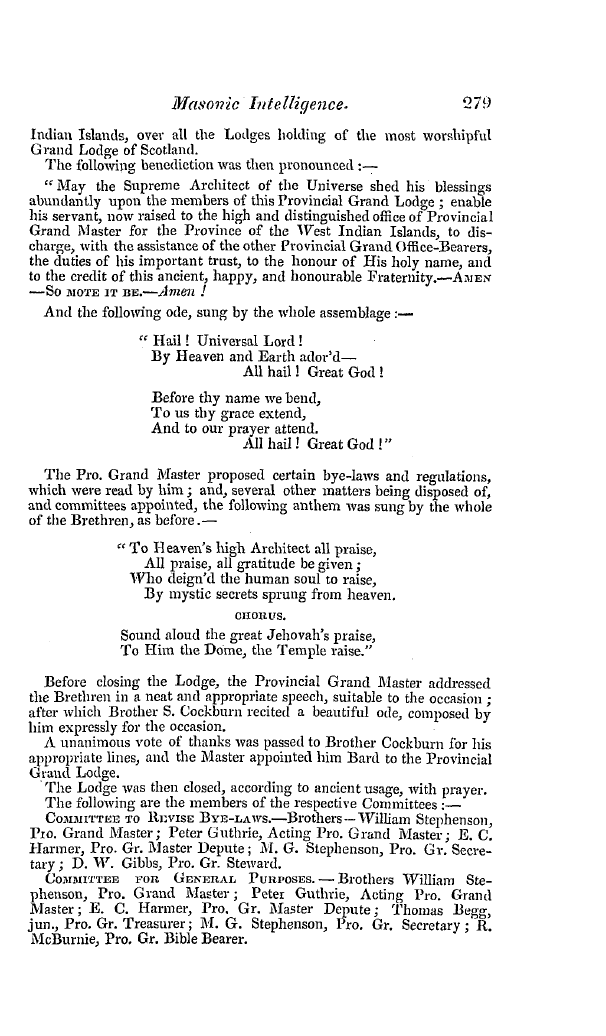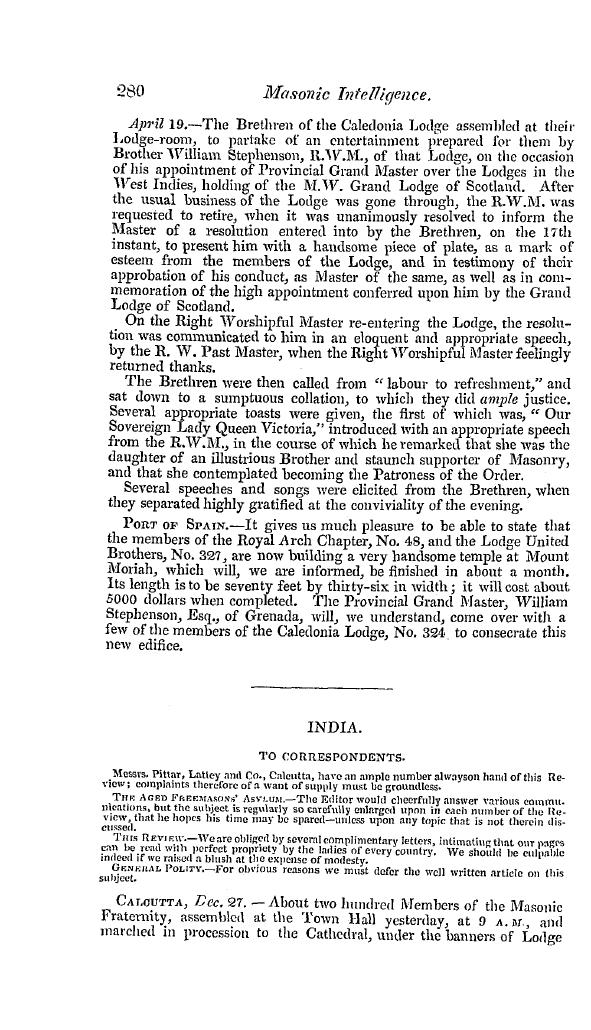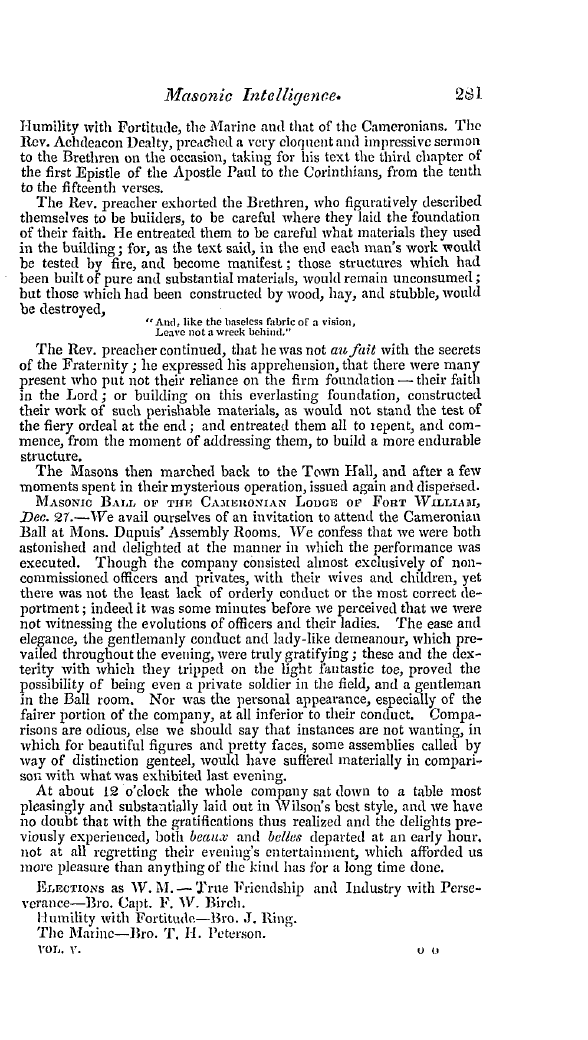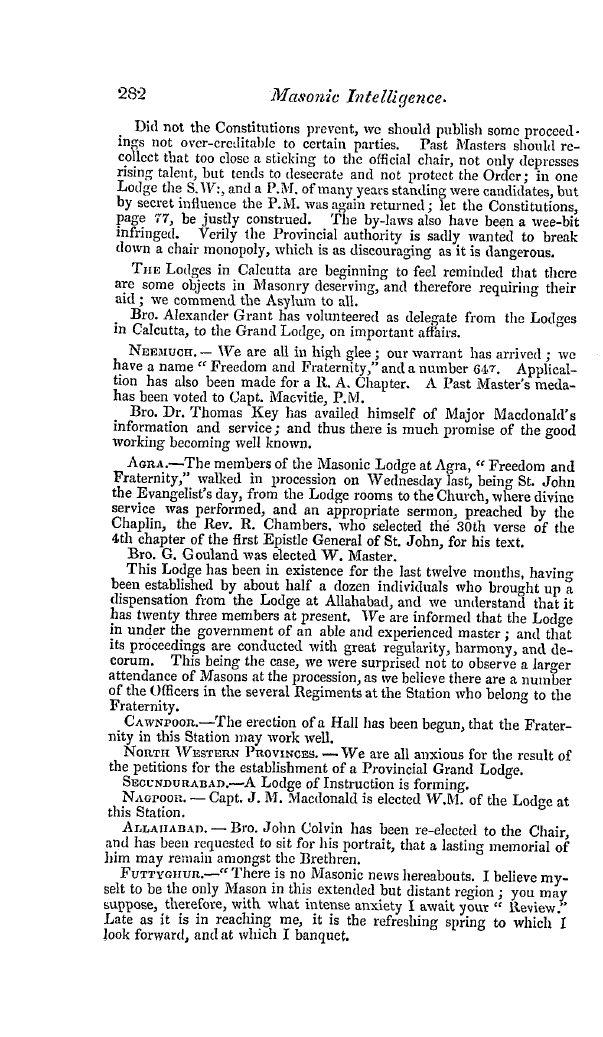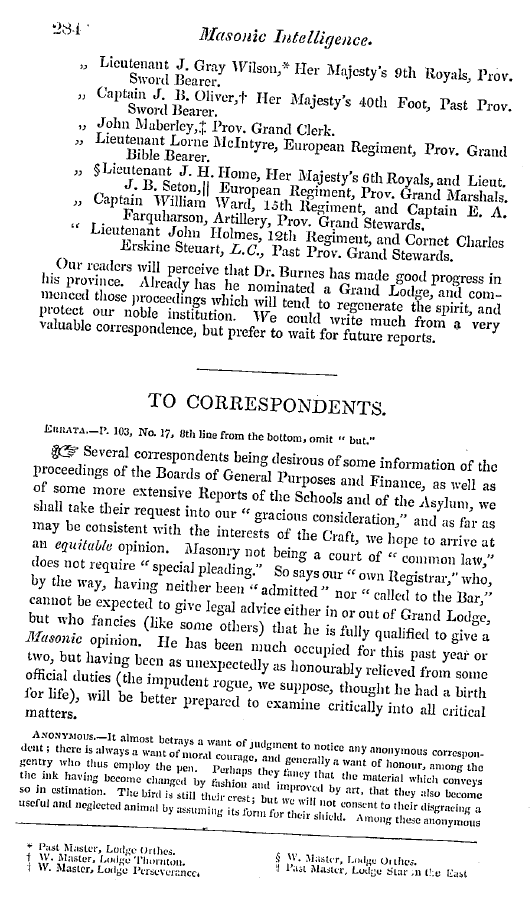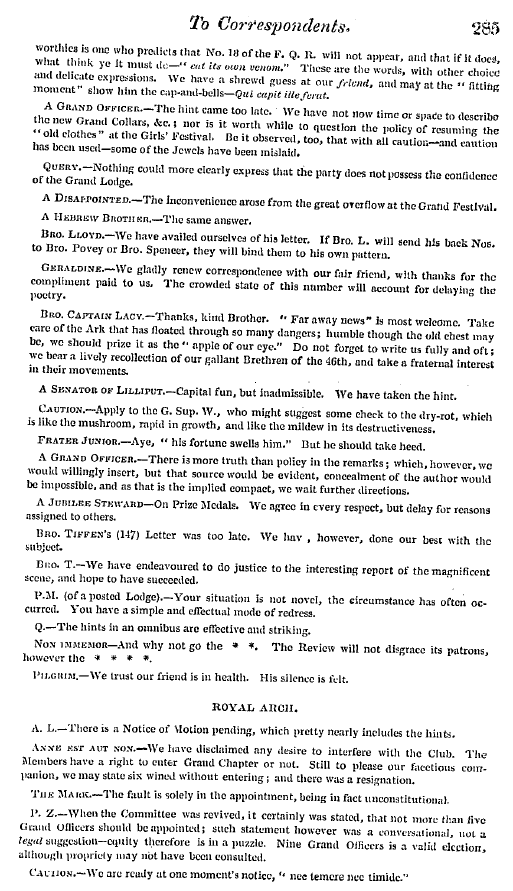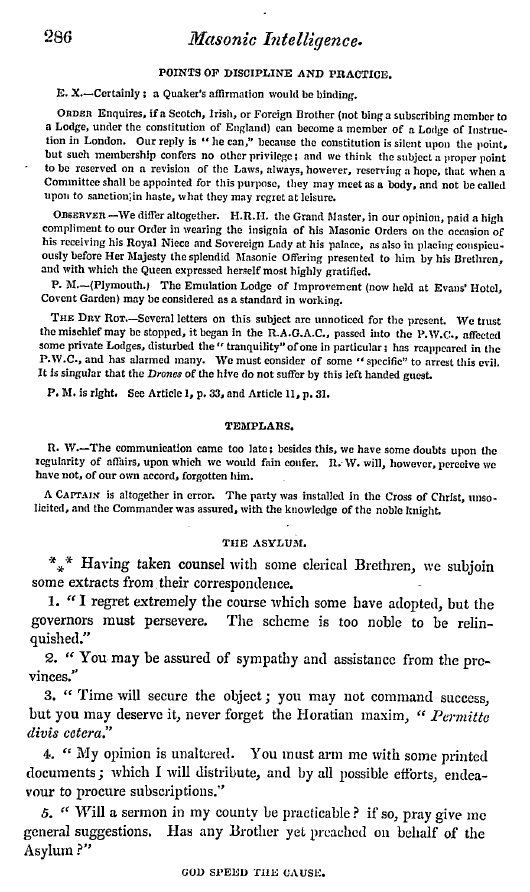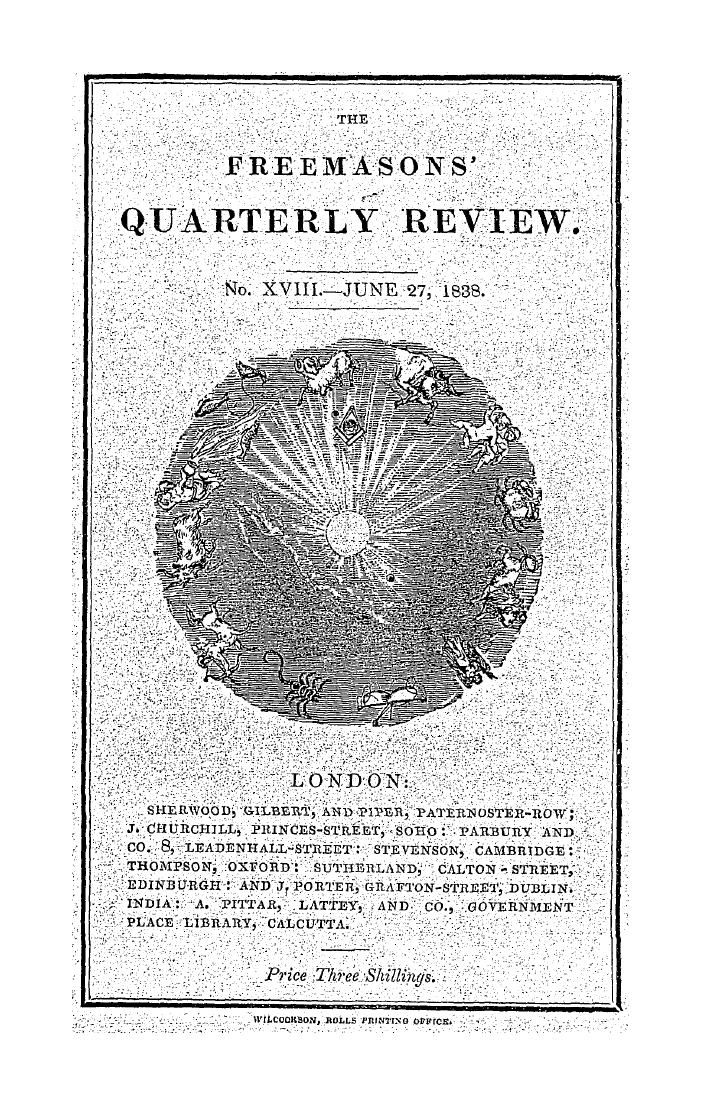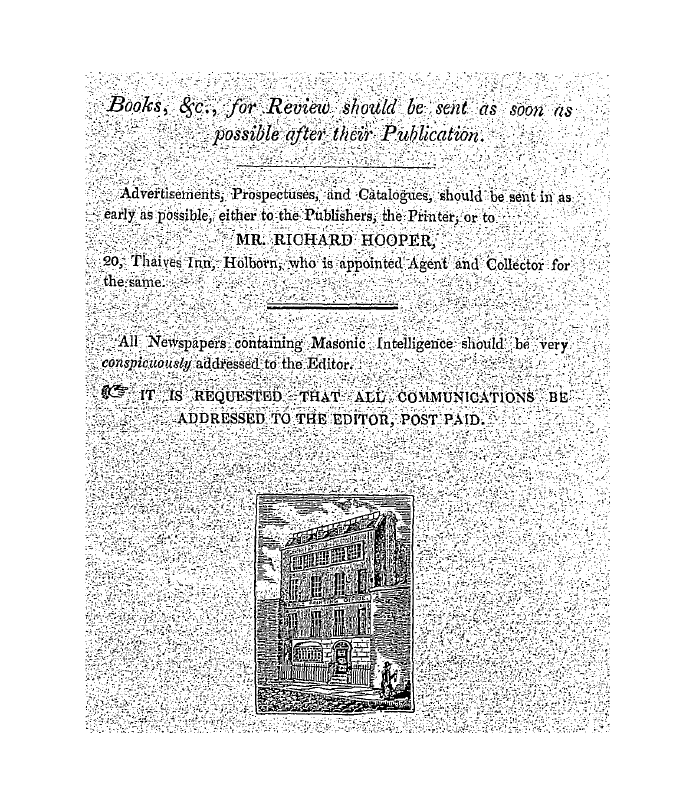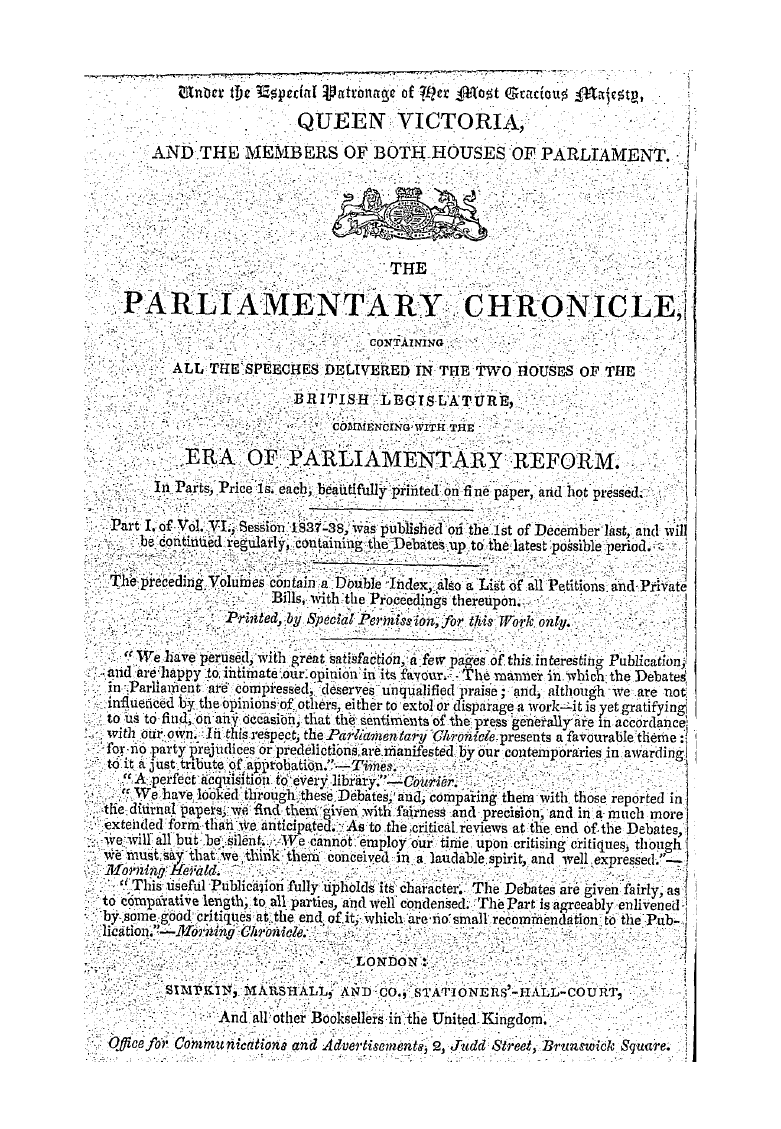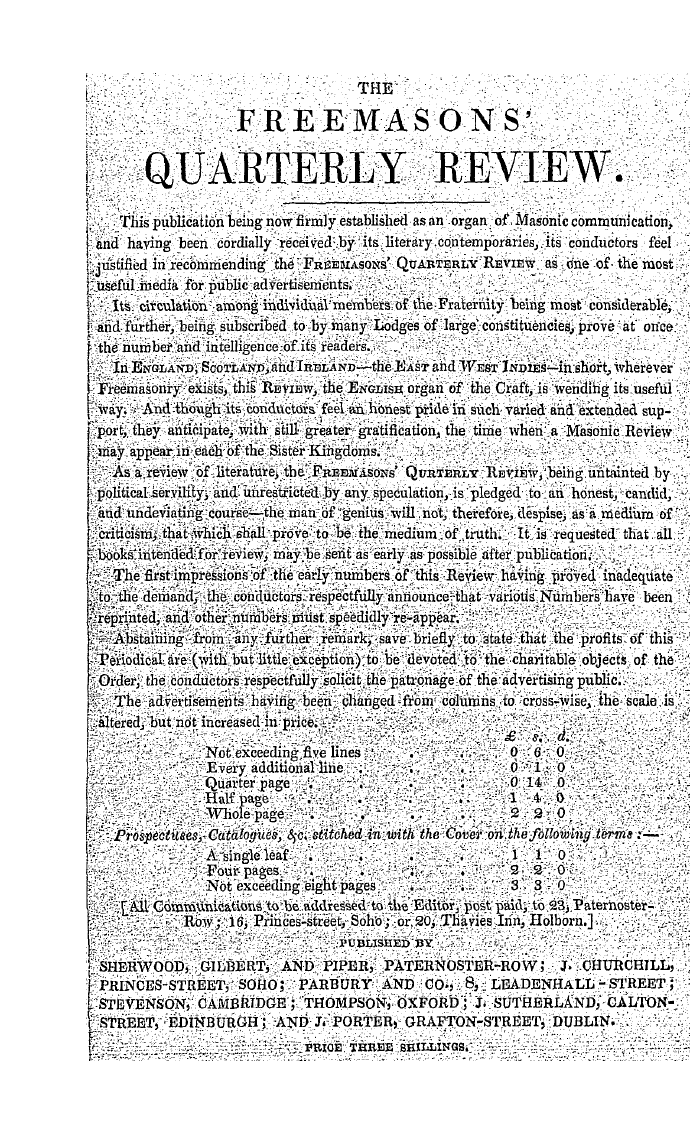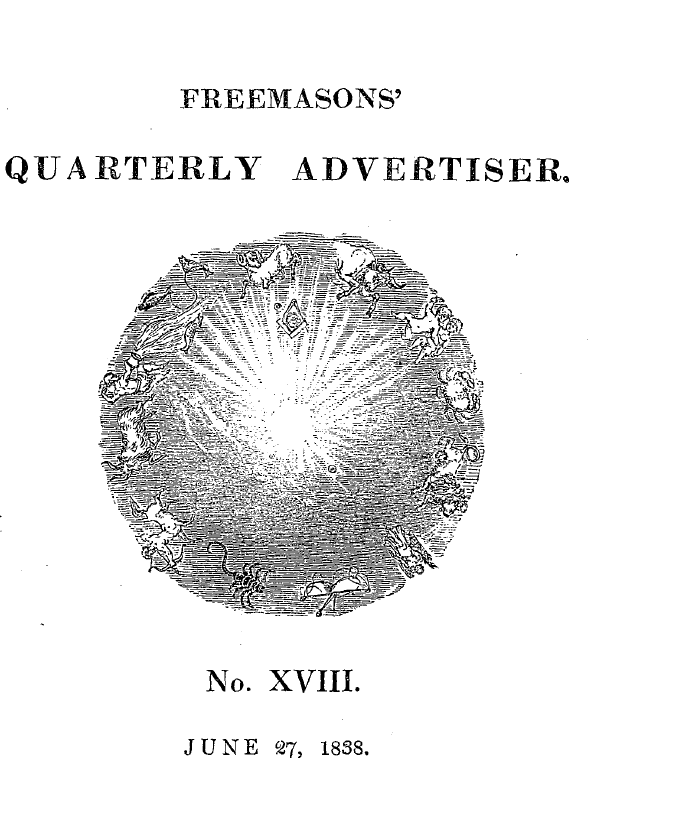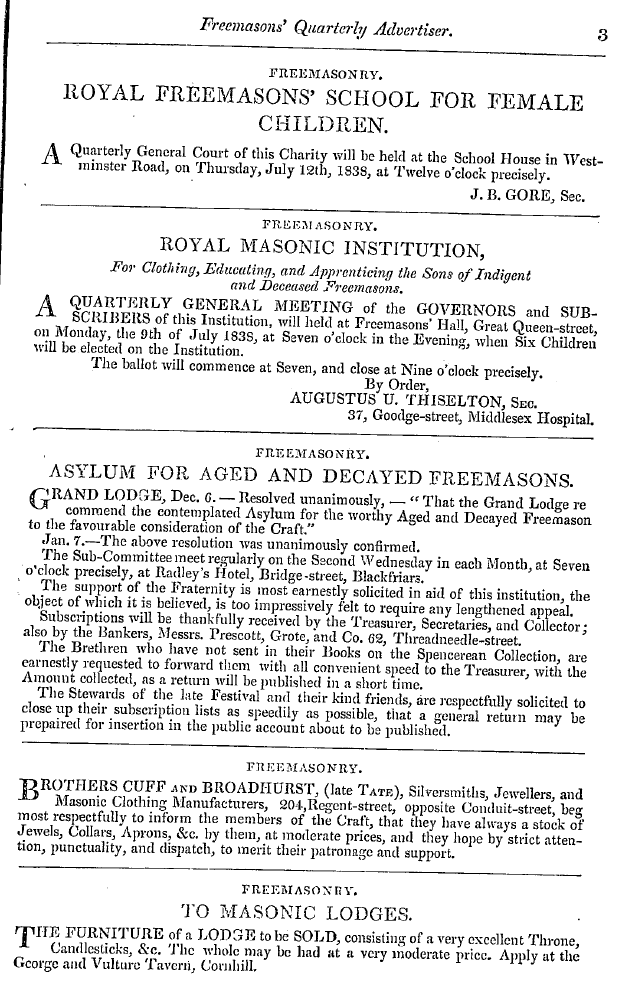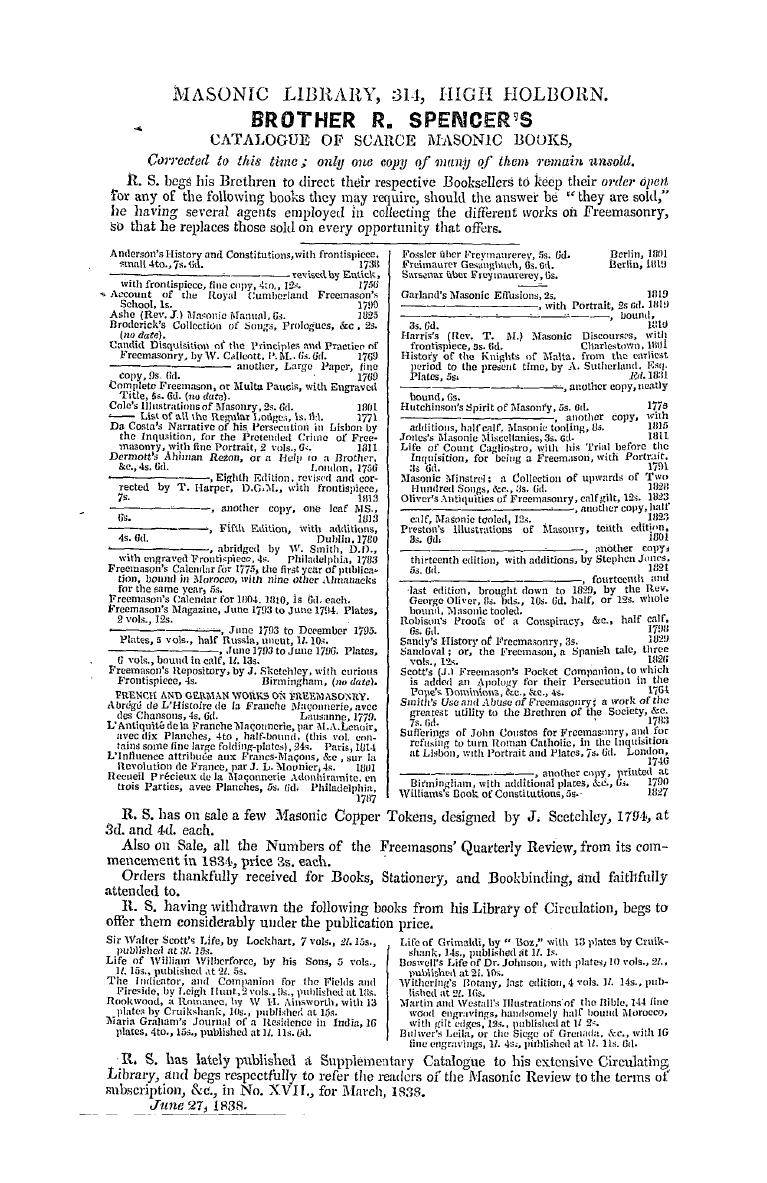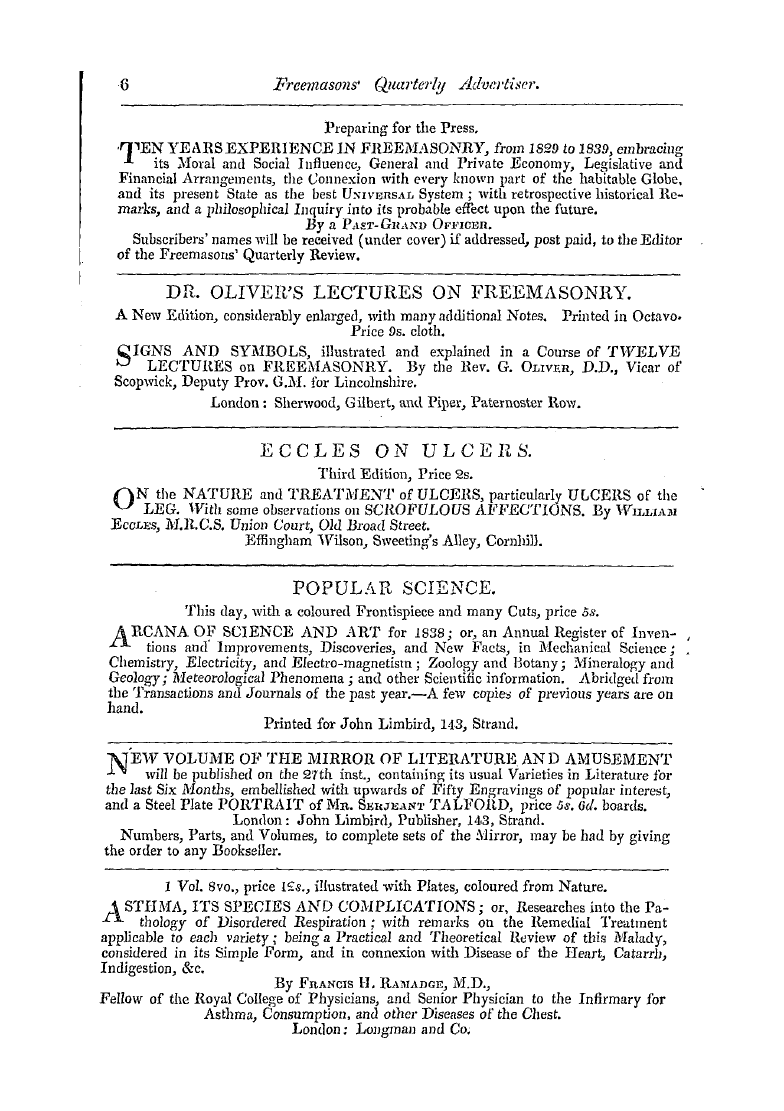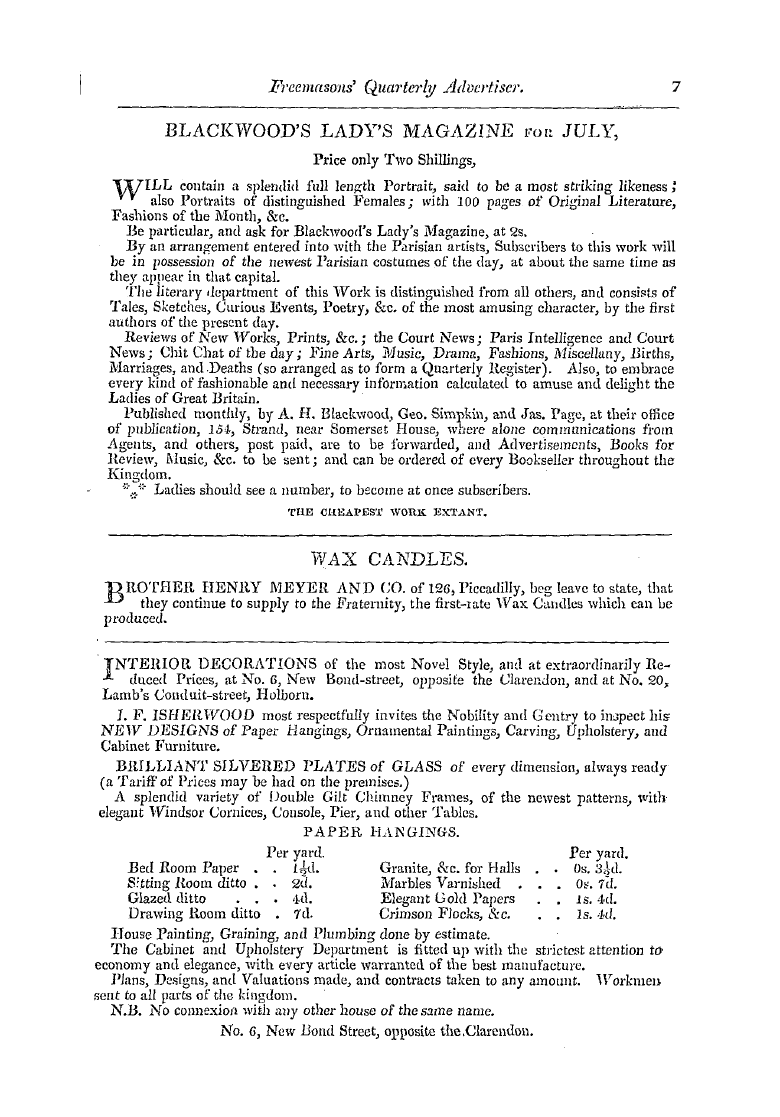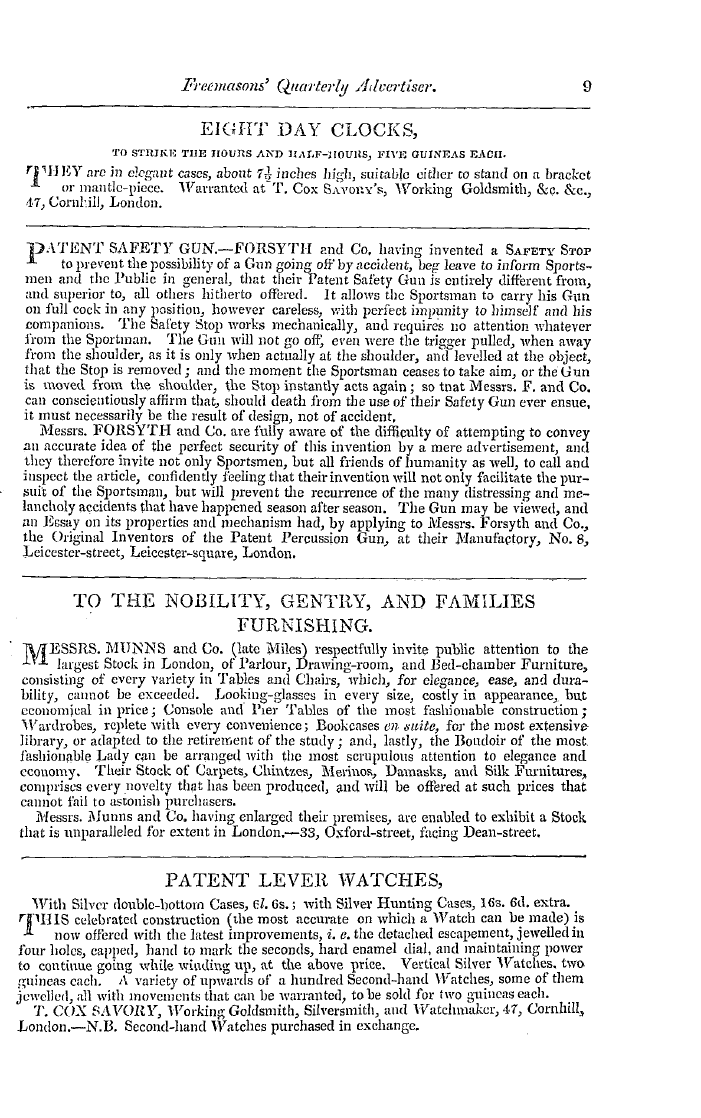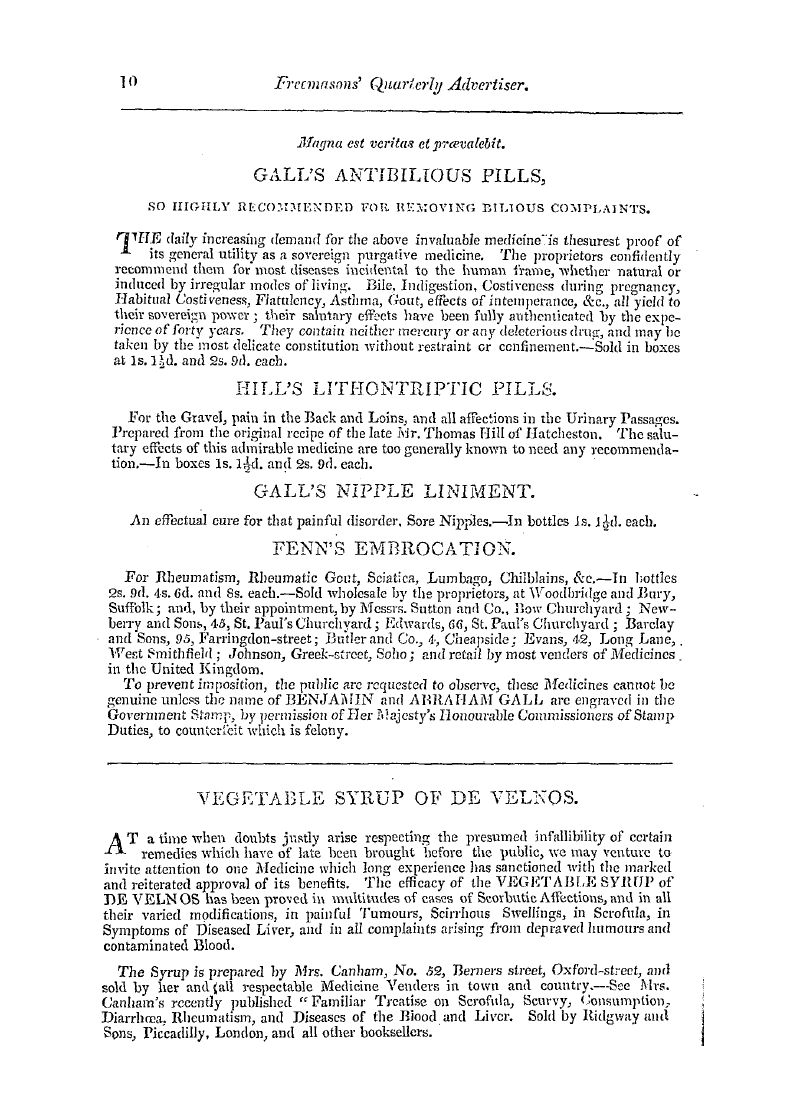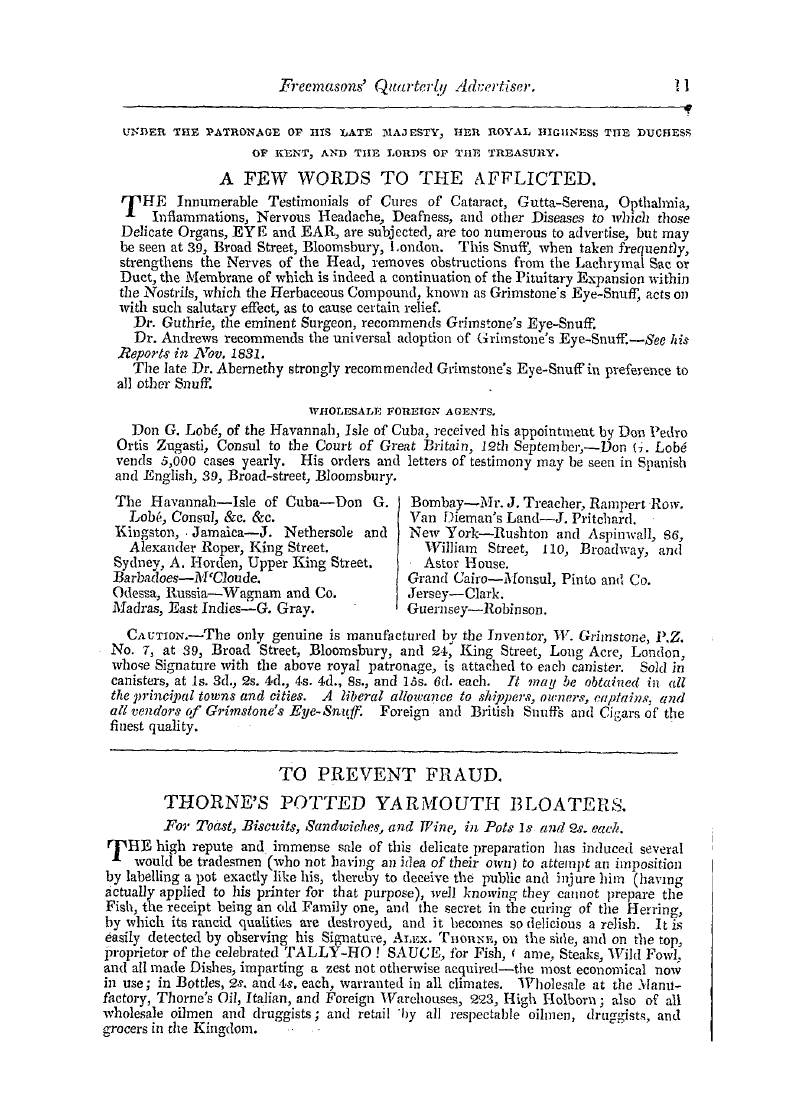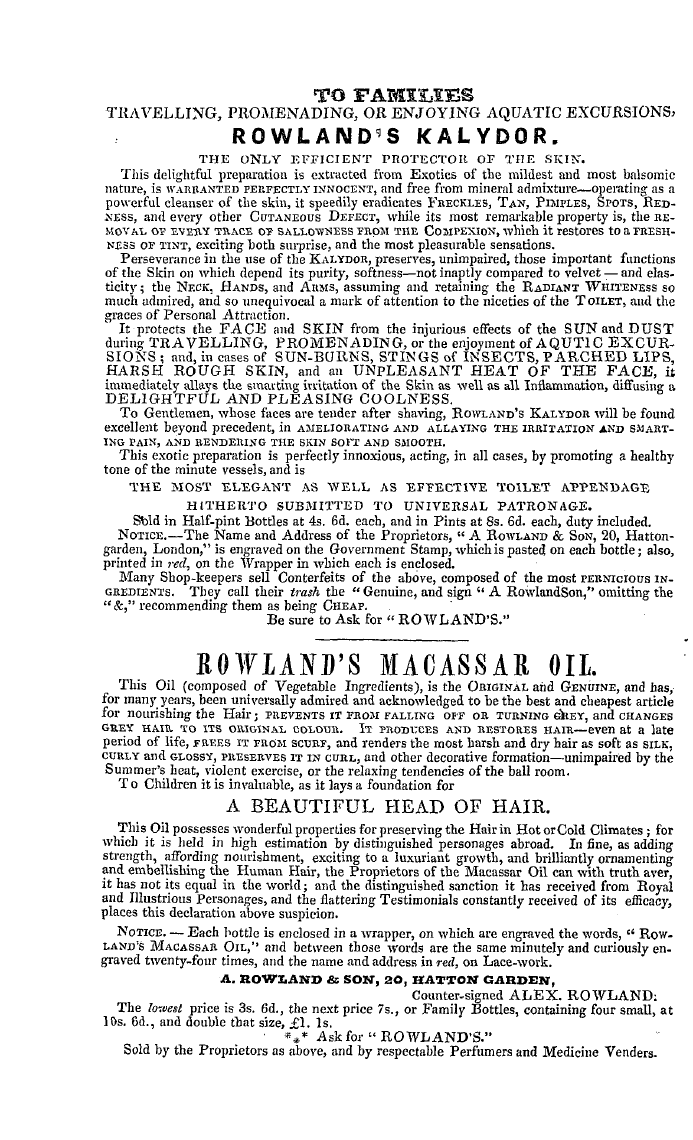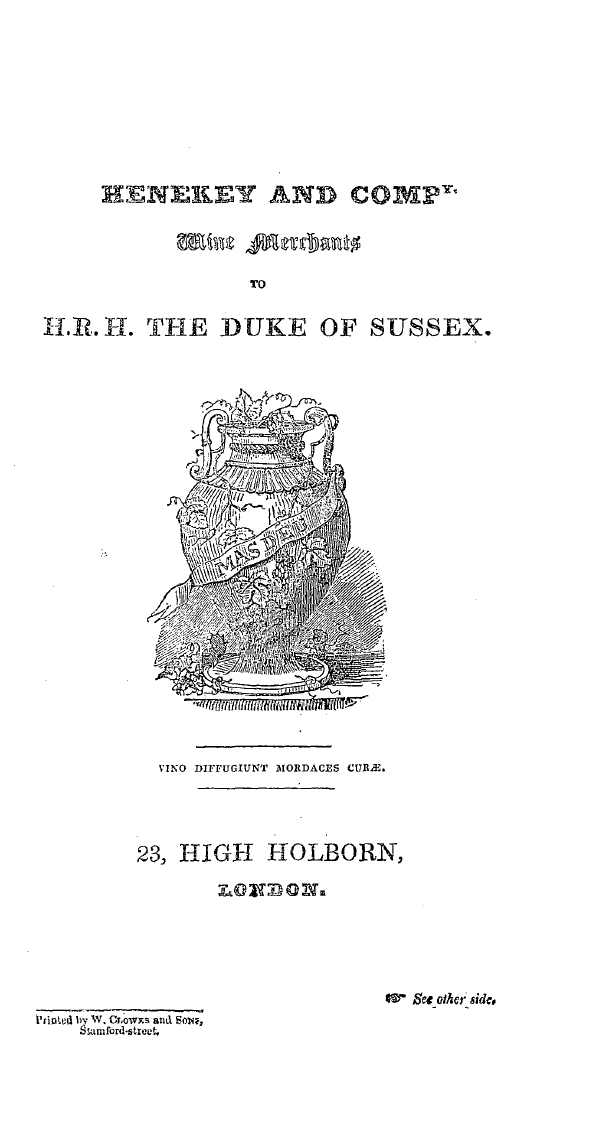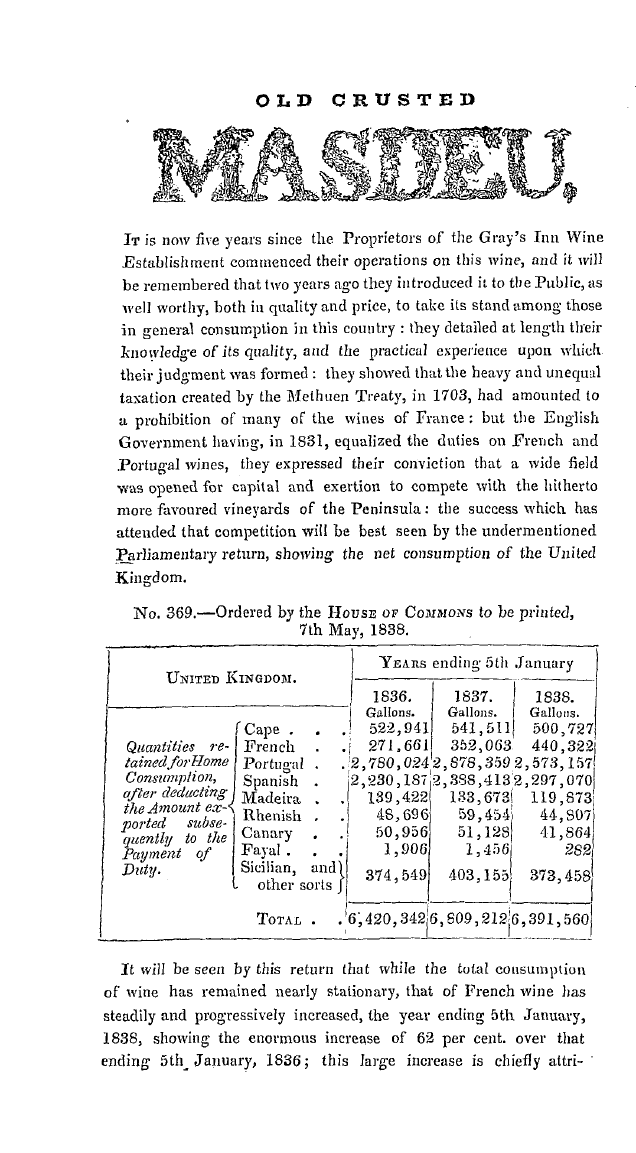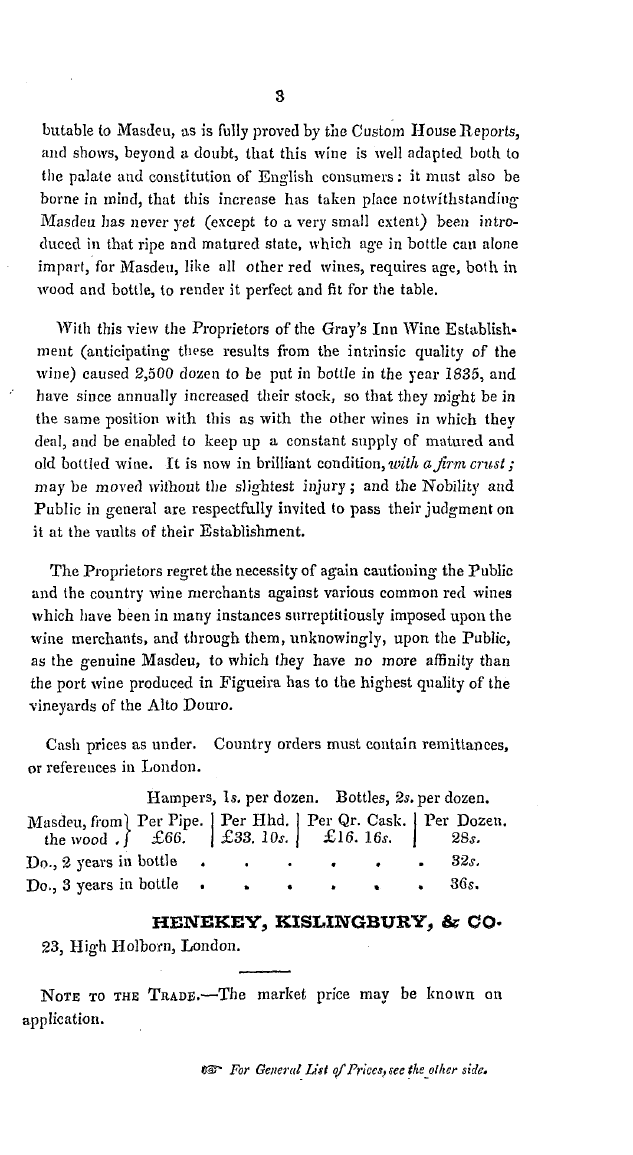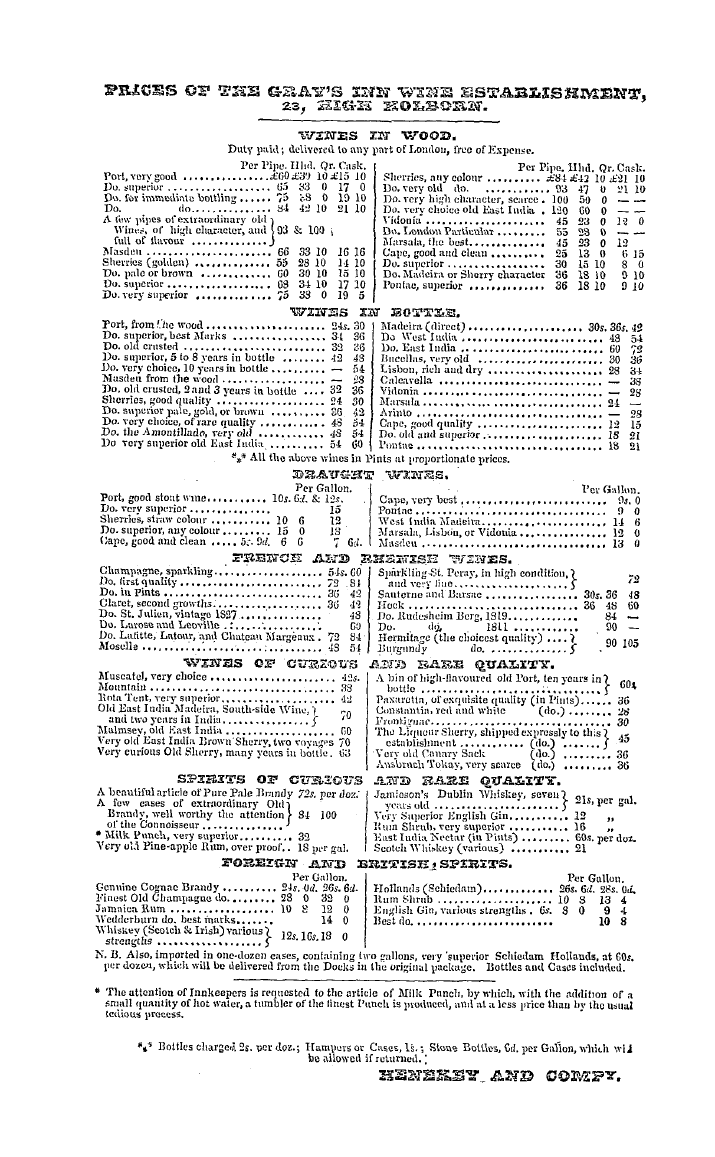Note: This text has been automatically extracted via Optical Character Recognition (OCR) software.
Description Of A Design For A Masonic Trophy To The Grand Master.
DESCRIPTION OF A DESIGN FOR A MASONIC TROPHY TO THE GRAND MASTER .
( With Engravings . ) In our last number ( page 73 ) will be found a communication addressed to various artists who hacl sent in designs for the " Offerin" - " Many were deserving of the hi ghest praise , and all of credit , for Sie taste shown in the designs ; but among them was one of such grandeur of conception , and so beautifully as well as classically illustrative of the Masonic subjectthat we cannot refrain from iving the following de
, g - tails . The reader will at once see that they form a perfect masonic poem ; the design is by Mr . William Pitts , an artist of high talent and deserved reputation . The < - Shield of iEneas , " modelled by him , as a work of art , is unrivalled . His Royal Highness the Duke of Sussex , Grand Master of English freemasons , having presided over the Fraternity fjr twenty-five years a period unexampled in the annals of Freemasonry , the Brethren were desirous to mark the letion of that
comp period hy some durable expression of their grateful sense of the happiness and prosperity they had enjoyed under his protectorate . At a general meeting of the Brethren it was resolved to present to His Royal Highness a votive tribute , to consist of an ornamental piece of plate , of the value of one thousand guineas . Several artists were invited to send in designs . Of course but one could be selected for execution ; in such a competition , therefore , ' it not l to be
was so disgracefu conquered as honourable to have contended ;" " and without impugning the judgment of the selection made , the artist who produced the accompanying design has been persuaded that , although deemed inadequate for its immediate object , it may still he useful in suggesting an idea for some analogous purpose , and therefore may be worth recording in the way now offered . The object aimed at in this design was a Masonic Trophy , which , while it should mark distinctlits
y peculiar occasion as a votive offering , should also fully explain its entire story , even without the aid of verbal inscription , and be , in fact , a Masonic Poem in Sculpture . For this purpose it was meant to embody , in an allegorical and dramatic manner , the History of Masonry by emblematical figures , and by representations of some of its most prominent facts and ceremonies . It must be borne in mind that the entire Trophy was to he about four feet high , ancl therefore the whole would be within the grasp of vision at the same time , and also capable of close examination in every part .
1 he general outline is that of a triumphal column founded on a rock y base , whereon is a square pedestal supported at the angles by the four cardinal virtues , Prudence , Temperance , Fortitude , and Justice ; representations of the three degrees of Masonry would occupy three of the sides of the pedestal , and the fourth would contain the inscri ption . Emblems of Masonry would fill up the otherwise unoccupied portions of the pedestal . This pedestal supports a pillar surmounted by three whole length figures of the graces , emblematic of those kindly feelings ancl virtues of improved ancl cultivated humanity , which are
Note: This text has been automatically extracted via Optical Character Recognition (OCR) software.
Description Of A Design For A Masonic Trophy To The Grand Master.
DESCRIPTION OF A DESIGN FOR A MASONIC TROPHY TO THE GRAND MASTER .
( With Engravings . ) In our last number ( page 73 ) will be found a communication addressed to various artists who hacl sent in designs for the " Offerin" - " Many were deserving of the hi ghest praise , and all of credit , for Sie taste shown in the designs ; but among them was one of such grandeur of conception , and so beautifully as well as classically illustrative of the Masonic subjectthat we cannot refrain from iving the following de
, g - tails . The reader will at once see that they form a perfect masonic poem ; the design is by Mr . William Pitts , an artist of high talent and deserved reputation . The < - Shield of iEneas , " modelled by him , as a work of art , is unrivalled . His Royal Highness the Duke of Sussex , Grand Master of English freemasons , having presided over the Fraternity fjr twenty-five years a period unexampled in the annals of Freemasonry , the Brethren were desirous to mark the letion of that
comp period hy some durable expression of their grateful sense of the happiness and prosperity they had enjoyed under his protectorate . At a general meeting of the Brethren it was resolved to present to His Royal Highness a votive tribute , to consist of an ornamental piece of plate , of the value of one thousand guineas . Several artists were invited to send in designs . Of course but one could be selected for execution ; in such a competition , therefore , ' it not l to be
was so disgracefu conquered as honourable to have contended ;" " and without impugning the judgment of the selection made , the artist who produced the accompanying design has been persuaded that , although deemed inadequate for its immediate object , it may still he useful in suggesting an idea for some analogous purpose , and therefore may be worth recording in the way now offered . The object aimed at in this design was a Masonic Trophy , which , while it should mark distinctlits
y peculiar occasion as a votive offering , should also fully explain its entire story , even without the aid of verbal inscription , and be , in fact , a Masonic Poem in Sculpture . For this purpose it was meant to embody , in an allegorical and dramatic manner , the History of Masonry by emblematical figures , and by representations of some of its most prominent facts and ceremonies . It must be borne in mind that the entire Trophy was to he about four feet high , ancl therefore the whole would be within the grasp of vision at the same time , and also capable of close examination in every part .
1 he general outline is that of a triumphal column founded on a rock y base , whereon is a square pedestal supported at the angles by the four cardinal virtues , Prudence , Temperance , Fortitude , and Justice ; representations of the three degrees of Masonry would occupy three of the sides of the pedestal , and the fourth would contain the inscri ption . Emblems of Masonry would fill up the otherwise unoccupied portions of the pedestal . This pedestal supports a pillar surmounted by three whole length figures of the graces , emblematic of those kindly feelings ancl virtues of improved ancl cultivated humanity , which are


























































